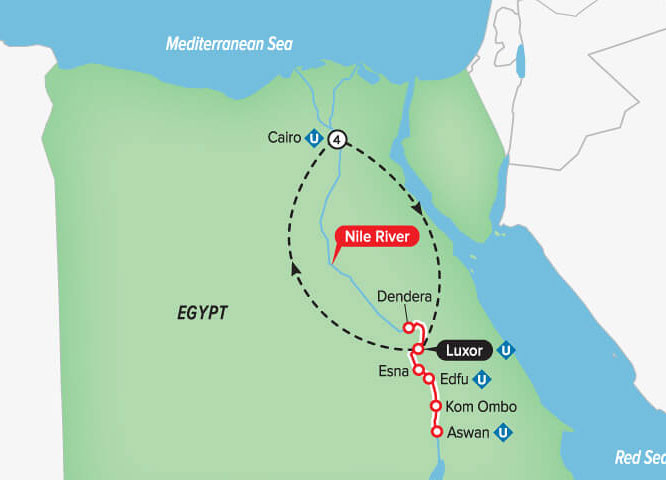
Egypt and the Nile
Mike and Judy Henderson
September 29 - October 10, 2018
I'm going to leave this map on each page so you can see where we are.

++++++++++++++++++++++++++++++++++++++++++++++++++++++++++++++++++++++
9/30/2018 (Sunday) Today is the official start of the tour. We first met at 8am in the lobby, but went up to a conference room.
Here are the Uniworld guides and Tour Director (other than Sam, who I pictured earlier).
A side note: During the time we were in Egypt, it was hot. It cooled off somewhat the last day or so. But be prepared - wear cool clothing, use a hat or carry an umbrella, and drink lots of water.
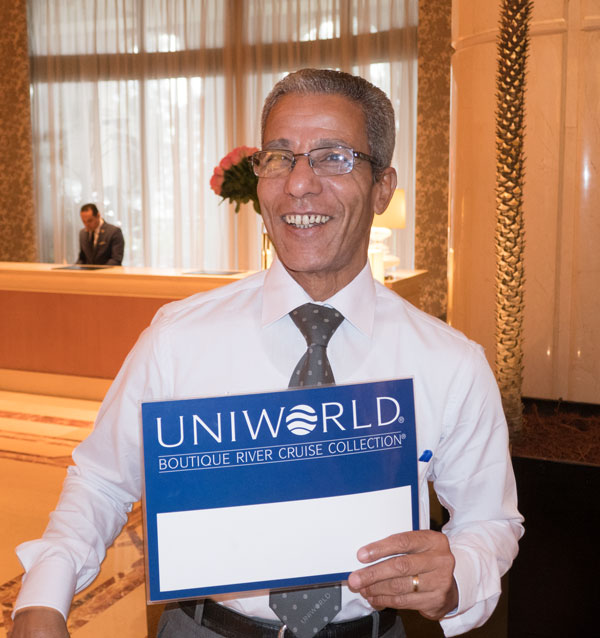
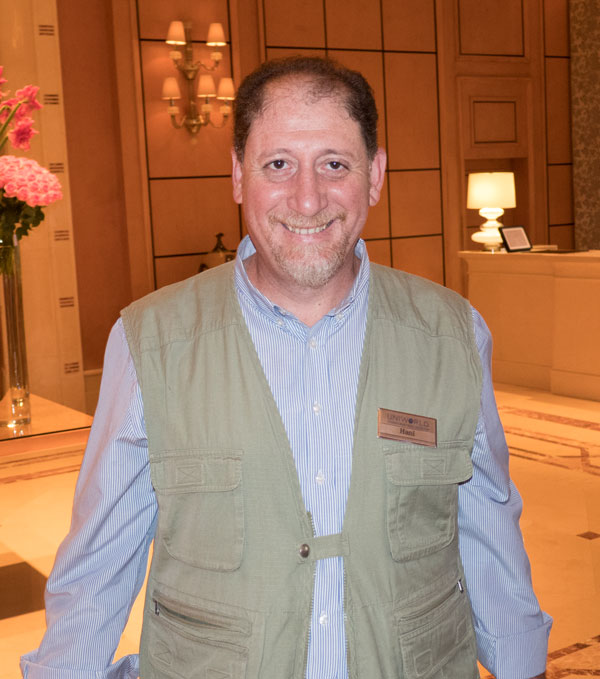
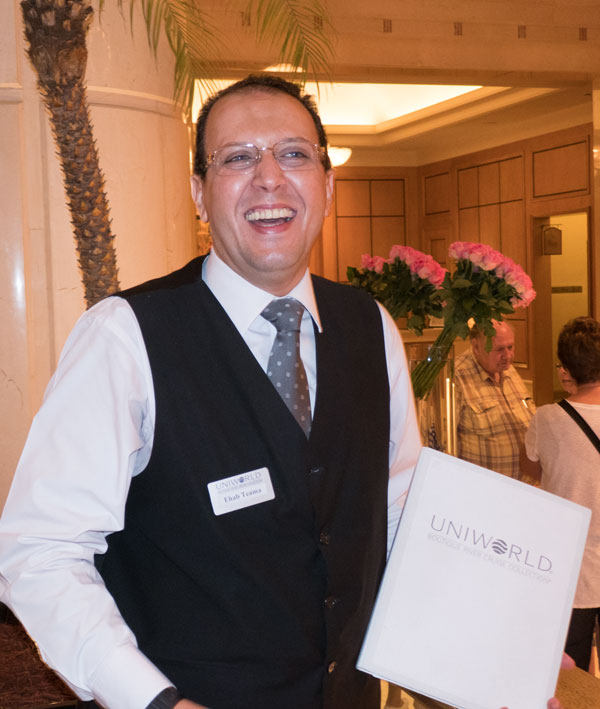
They covered the details of the tour, including choosing the optional excursions. Uniworld gave each member of the tour group 20 five Egyptian pound notes (about $0.28 for five pounds) to use for things like bathroom access or taking a picture of an Egyptian. They explained that in Egypt, a small payoff is expected for many daily transactions. This was to prove very useful.
And just a side note: If you purchase something from a vendor at a temple, they will readily take American dollars. They sell a lot of things for $1, so if you give them a $20 bill, you will likely get change in $1 bills. This is not bad because $1 bills can be used in many places.
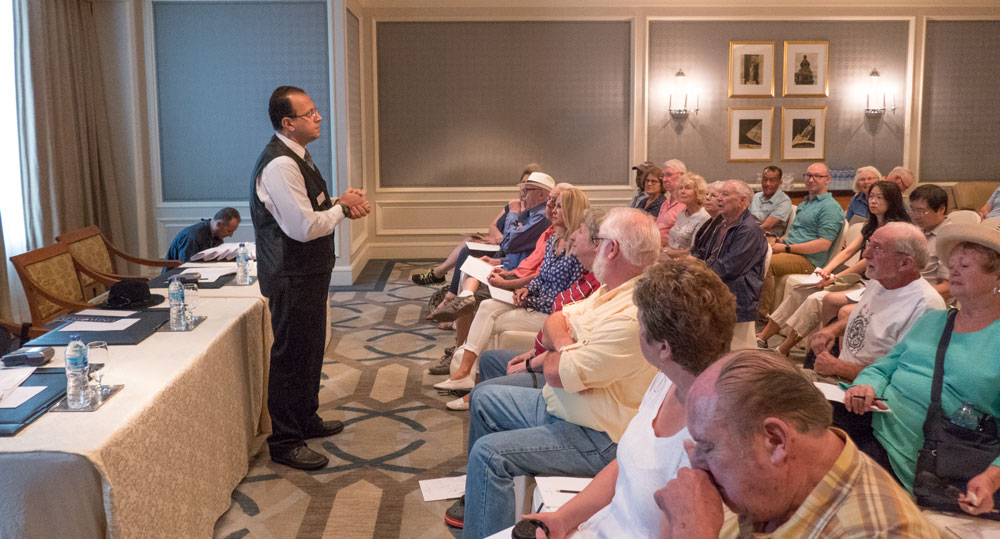
Then it was to the Egyptian Museum. It was a hot day and the museum is not air conditioned. Egypt is building a new museum in Giza which will be air conditioned. This museum will not close but will be limited to items that are not damaged by temperature changes and humidity, such as stone statues. The poor conditions in this museum are blamed for some of the deterioration of Tutankhamen's relics since their discovery.
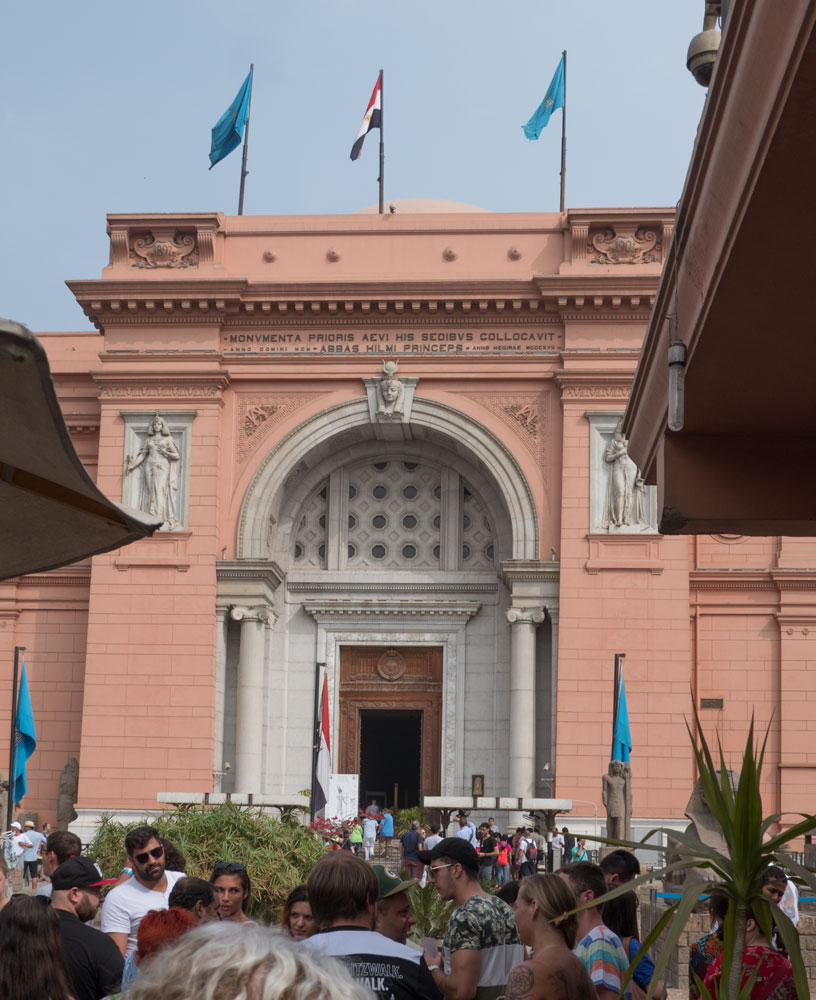
A few pictures from the museum.
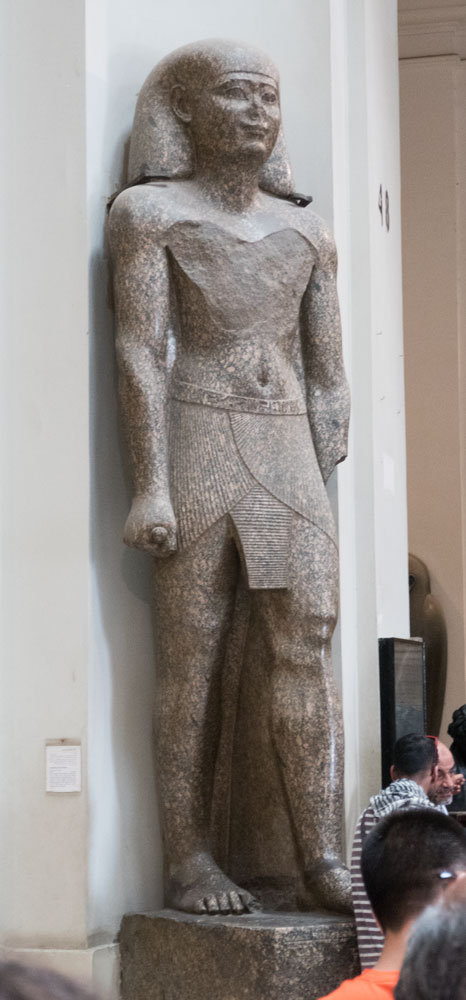
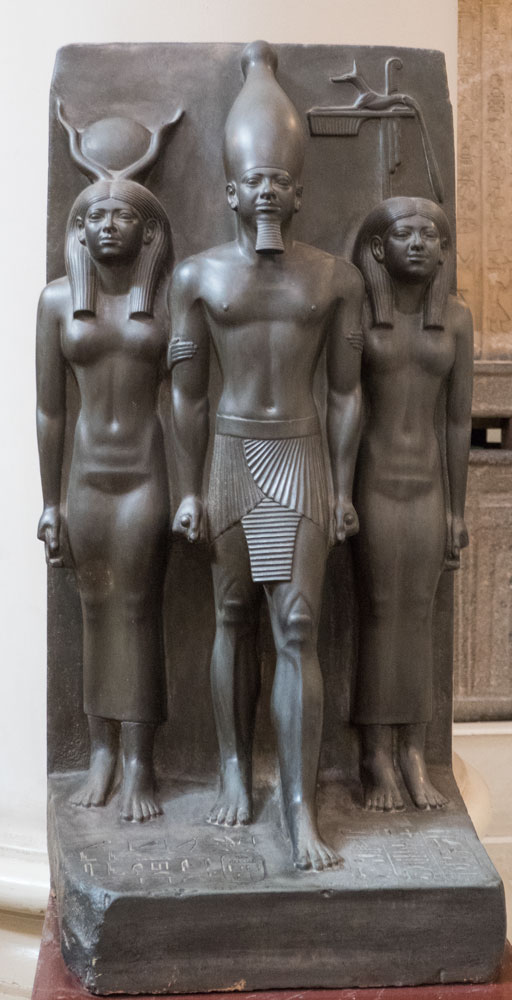
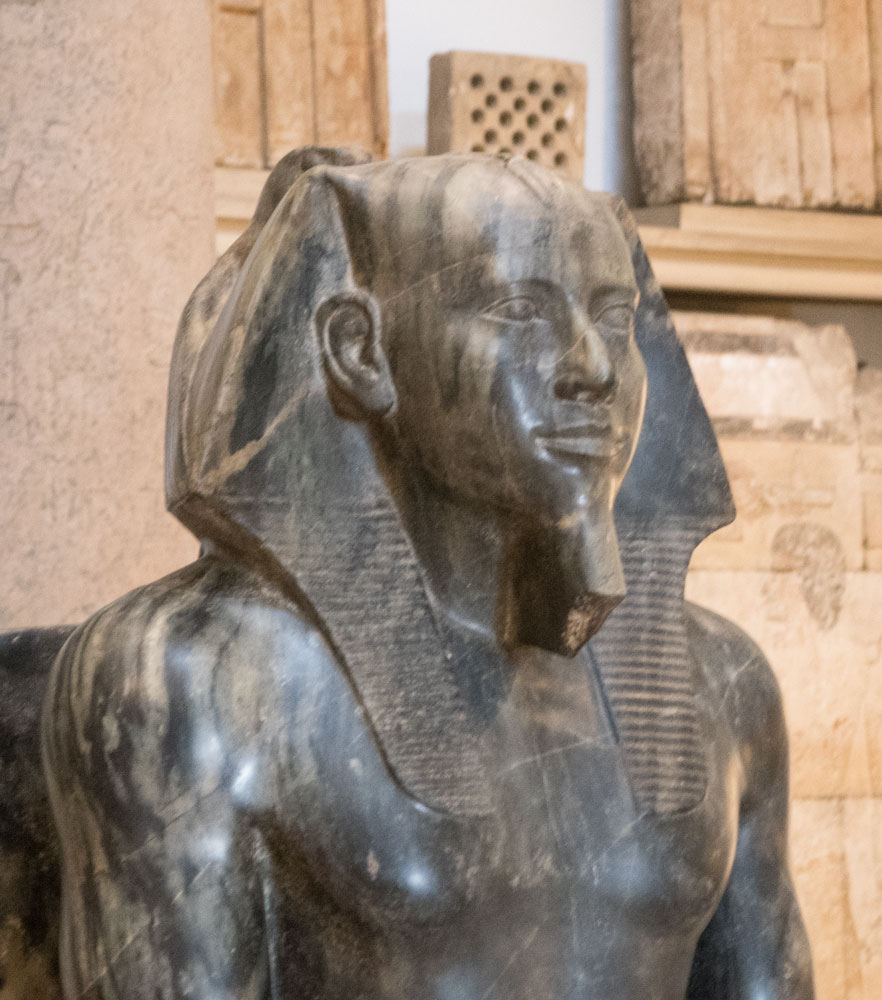
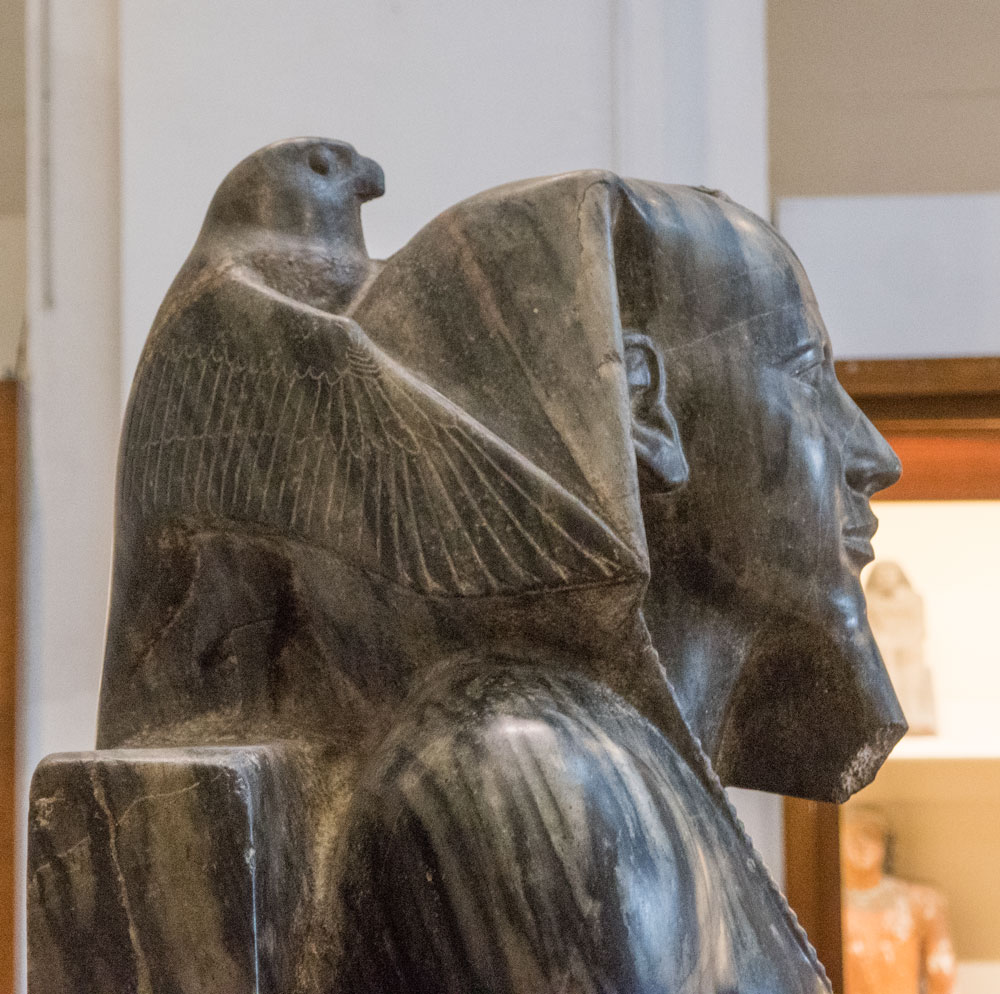
Notice the Egyptian bank note being held in front of this statue. The image on the banknote is of the statue.
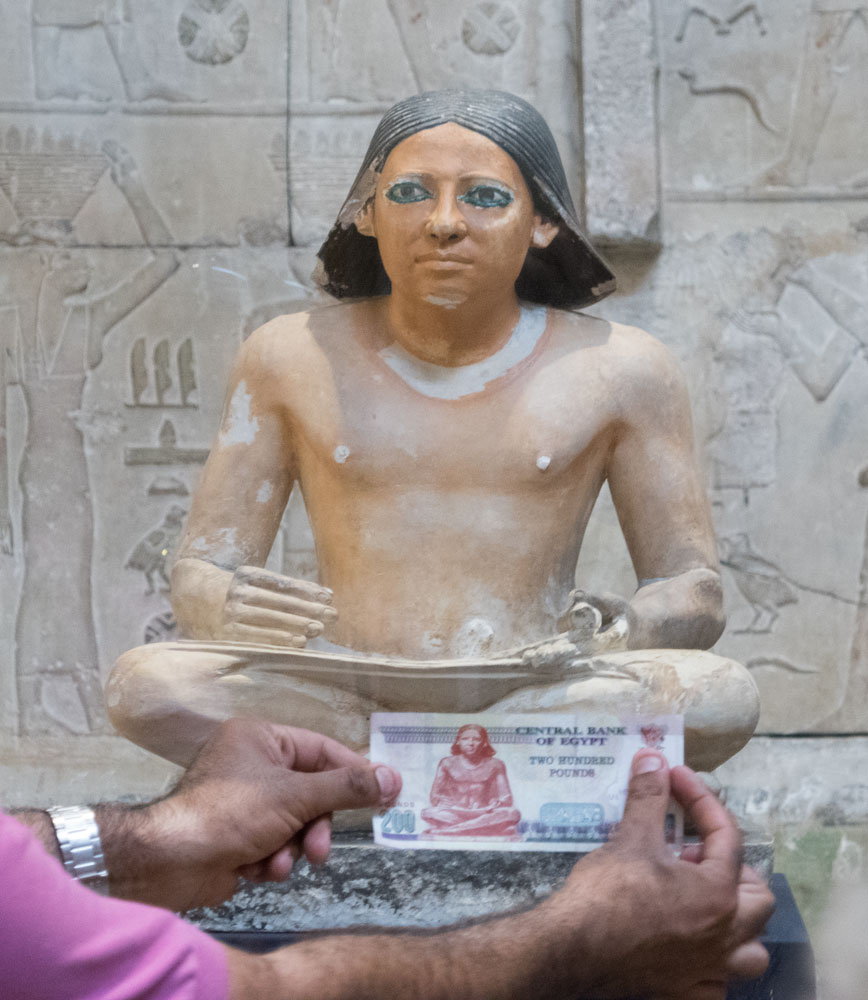
One last picture of the Egyptian Museum - a view into the main hall.
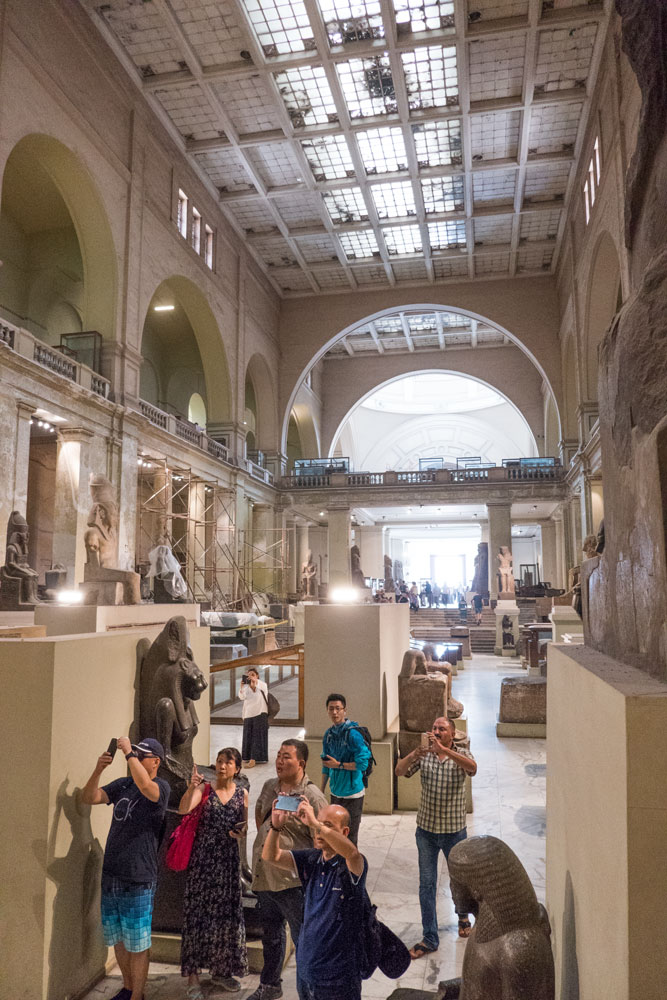
That completed our visit to the Egyptian Museum, and it was about lunch time. We walked to the Ritz-Carlton hotel which is next door to the museum.
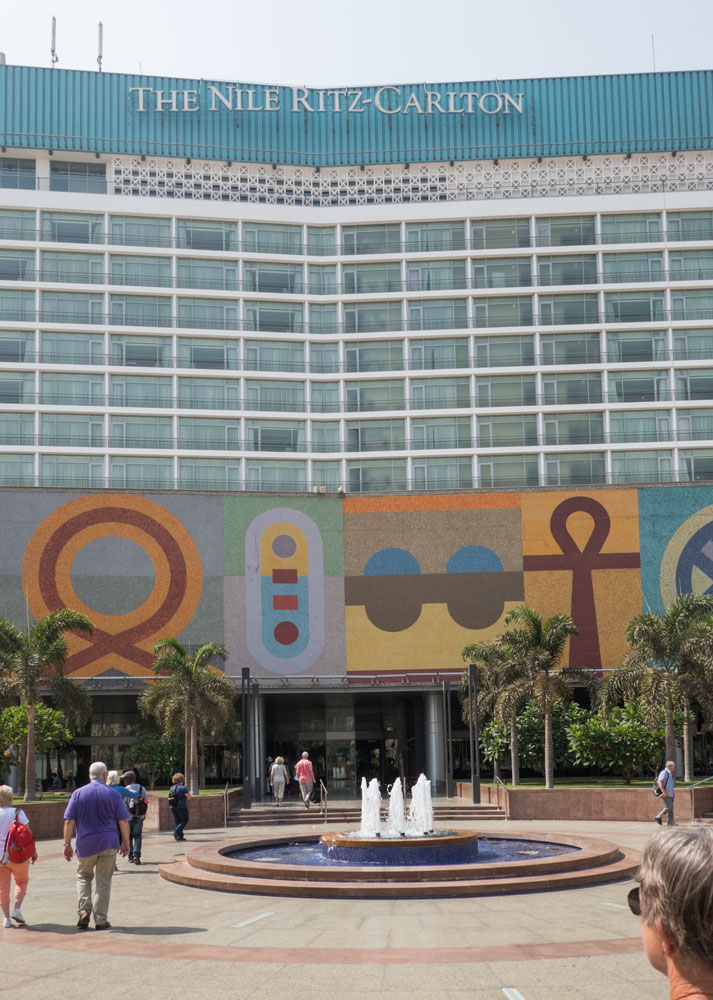
It's a nice hotel and we had a good lunch.
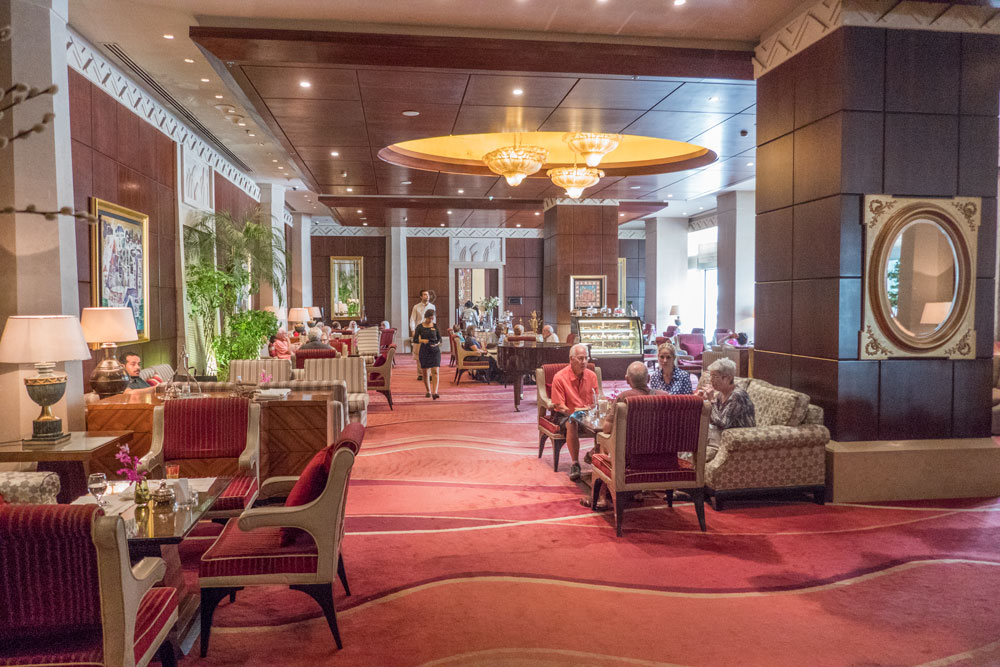
As we were leaving the area we passed by Tahrir Square, which was the site where people gathered in 2011 to protest the government in an action that is now known as the Egyptian Revolution of 2011. Here are two views of the square, approximately from different sides. You can find more pictures in the links just above.
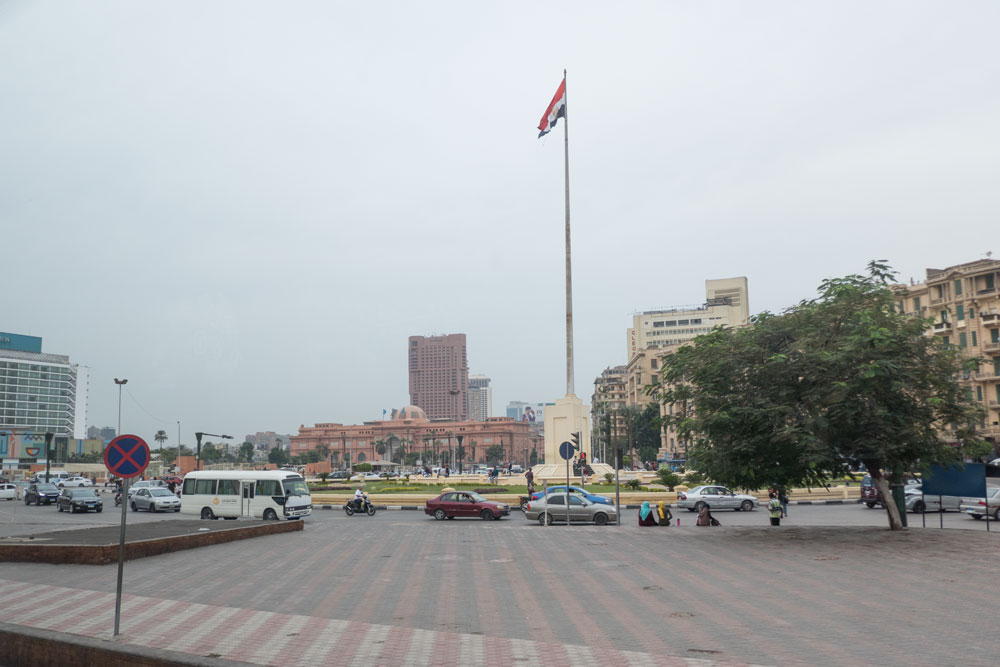
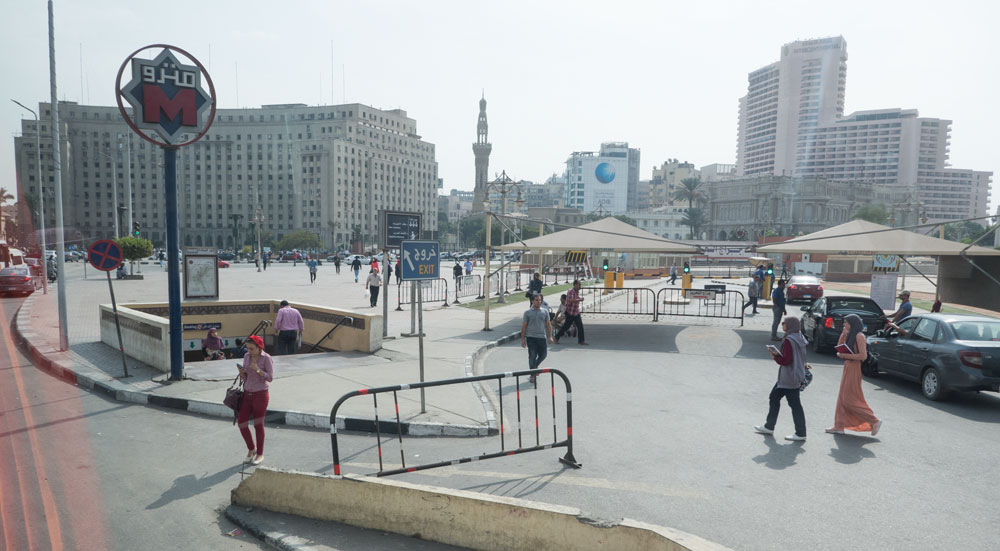
We drove to the Saladin Citadel of Cairo, also known as the Citadel of Salah al-Din and as the Cairo Citadel. In the citadel is the Mosque of Muhammad Ali. No, it's not that boxer's mosque. Muhammad Ali was the Pasha of Egypt from 1805 to 1848.
This view of the citadel mostly shows the mosque.
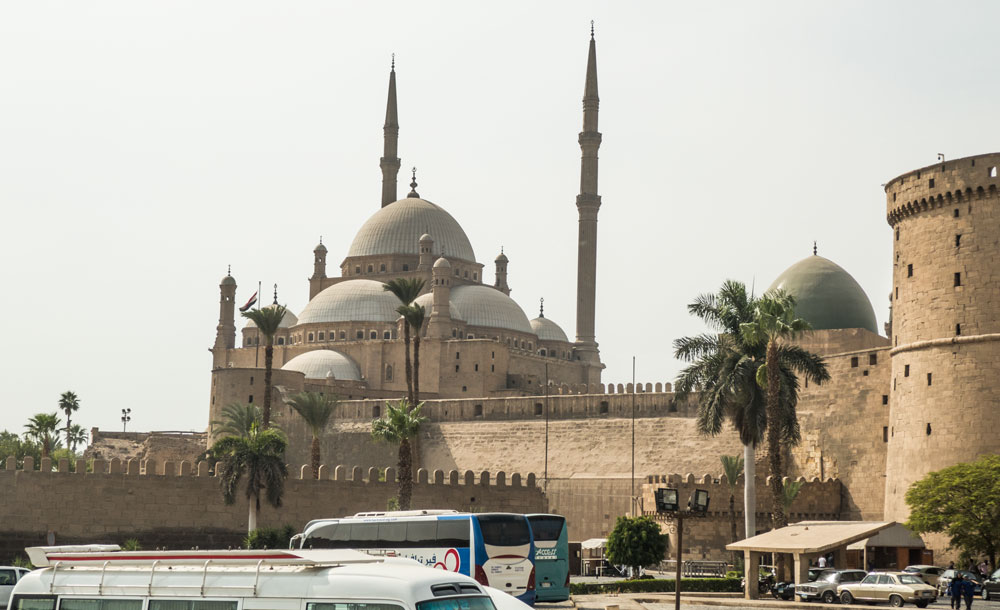
Another view of the mosque from a different angle.
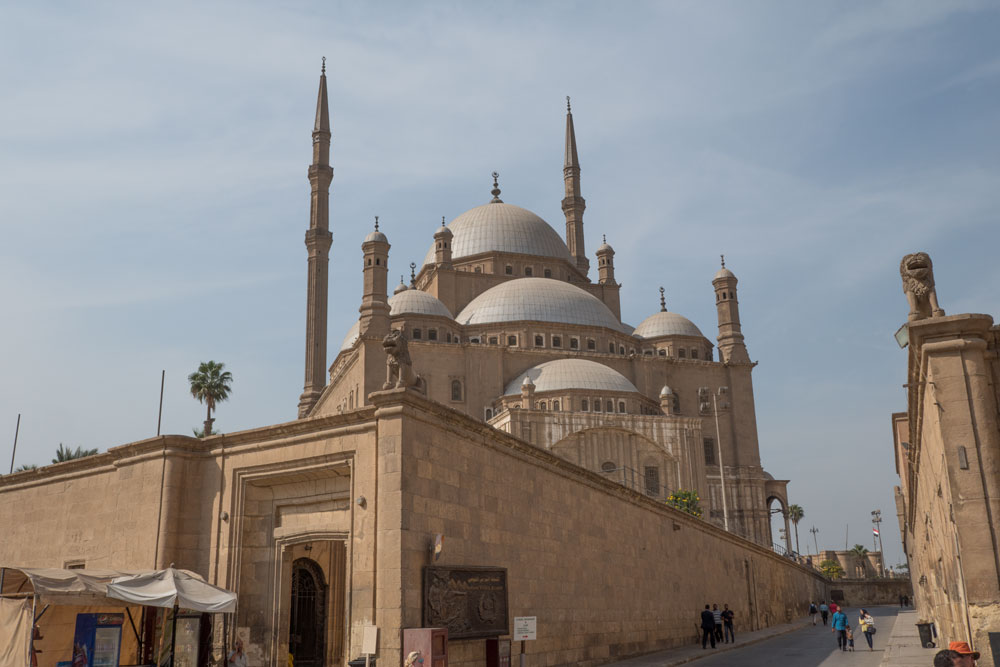
In the courtyard just outside the mosque is this structure, called the ablution area. Muslims would wash their hands and feet (called Wudu) at this place before entering the mosque. Side note: A Muslim will always enter the mosque with his/her right foot first (stepping over the threshold) and depart the mosque left foot first.
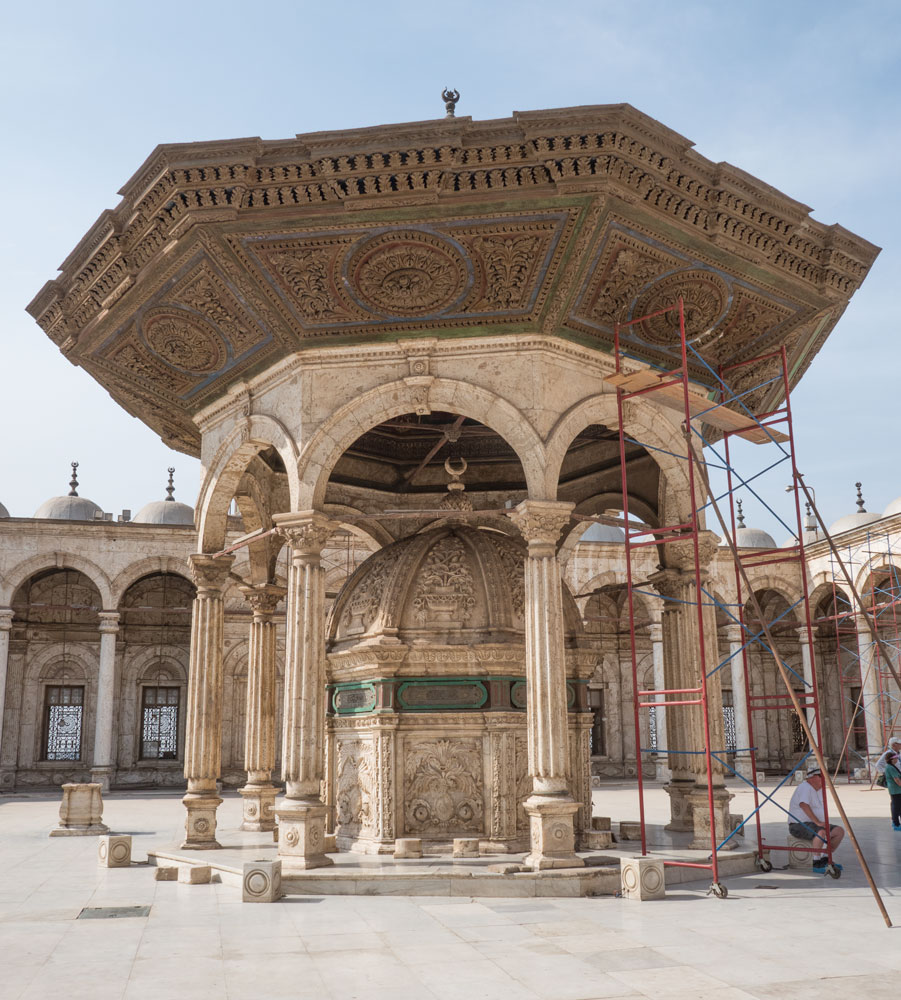
Here's a closer view. You can see where they would sit, and the faucets (or the holes where the faucets were). I don't know if this structure has a specific name - I expect it does, but I don't know what it is.
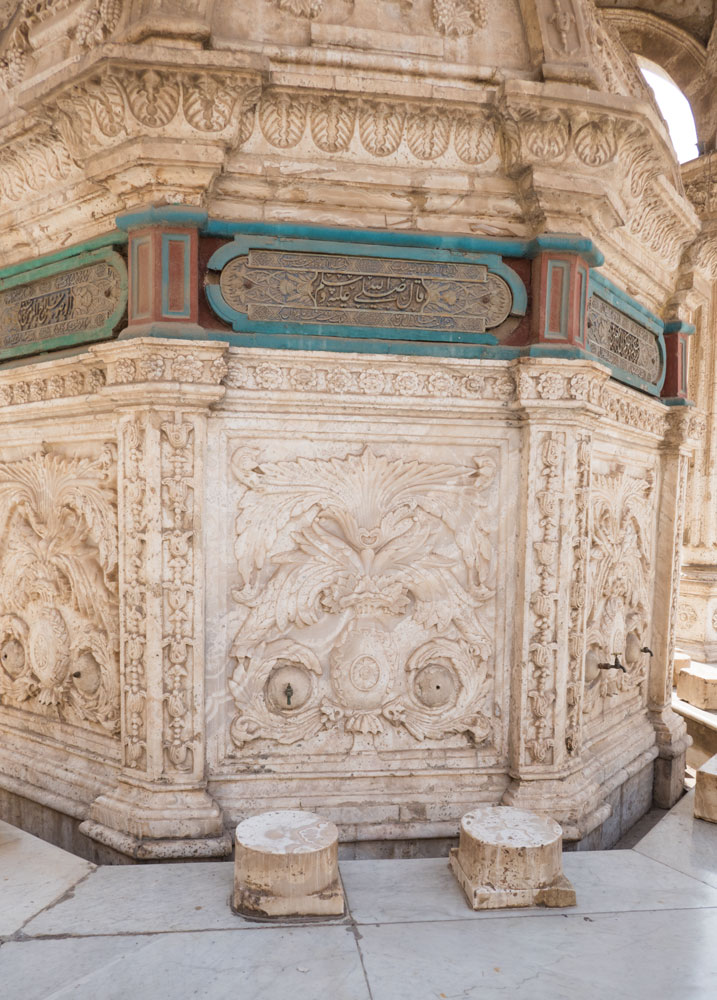
I didn't get a good picture of the interior of the mosque but I took this picture from the web.
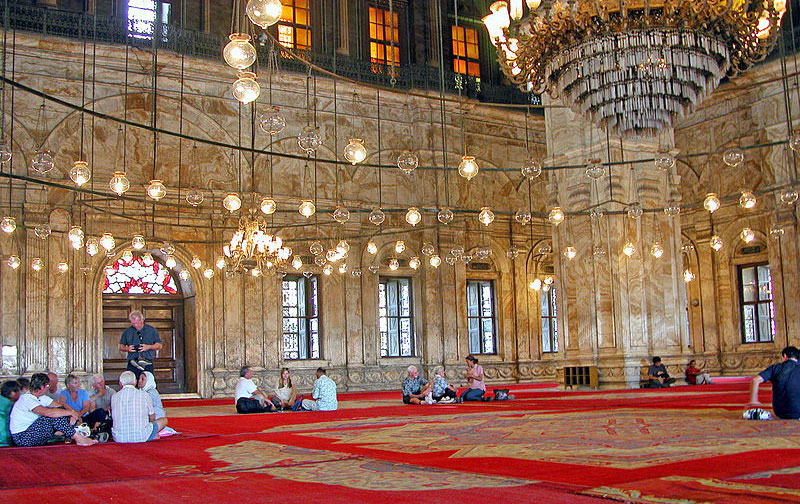
Here's a picture of part of the dome ceiling.
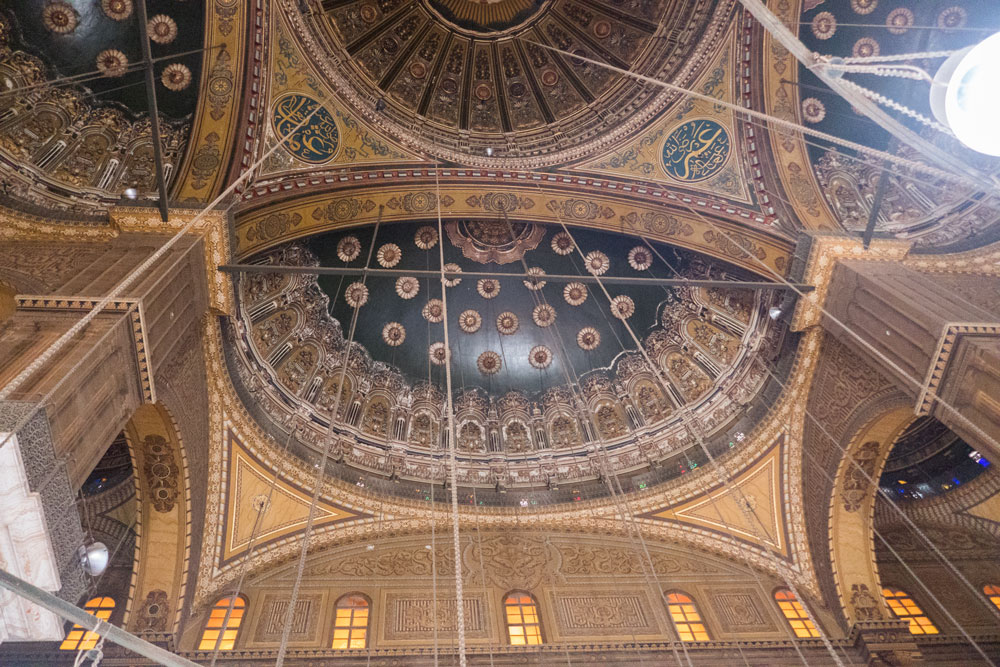
This is something I found interesting that the guide pointed out. At the very center of the main dome, where the chandelier is attached, there's a star of David. It is not unusual to find that pattern in Islamic art before the late 1800's when it became the symbol of Zionism.
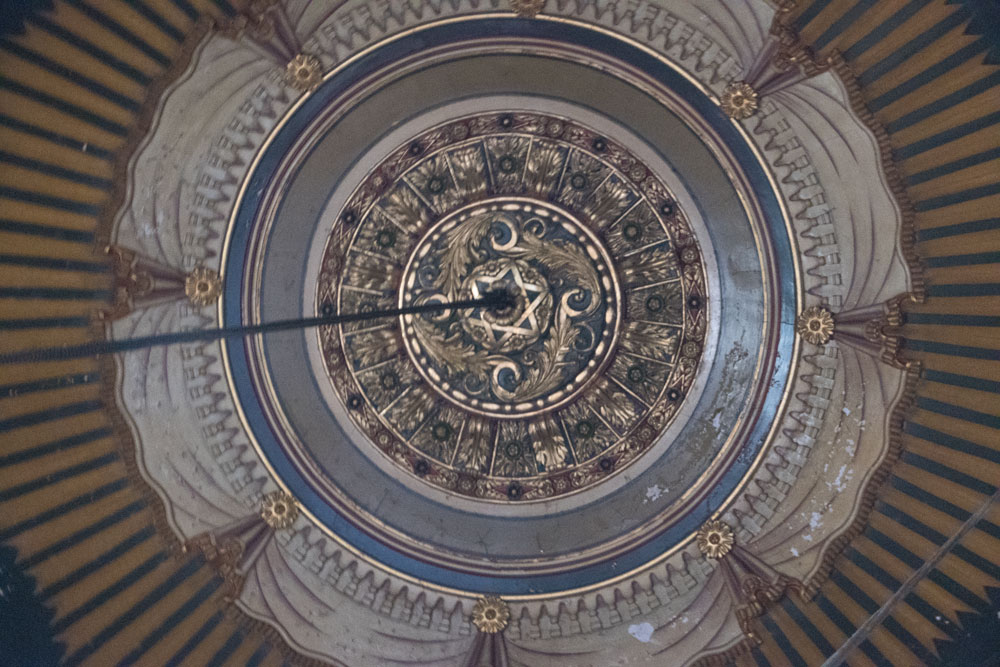
Leaving the mosque, we were on the plaza overlooking the city.
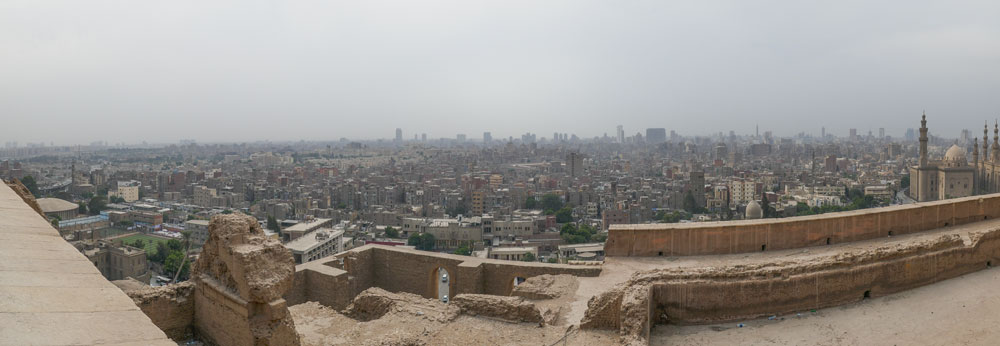
As we drove back to the hotel, I tried to get a few street scene pictures. Here's a bakery.
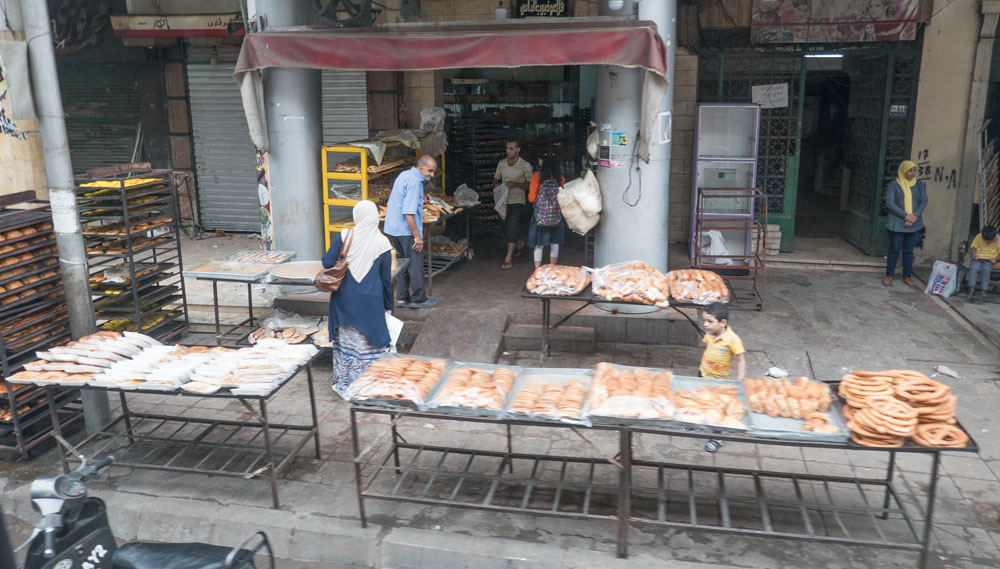
A market area.
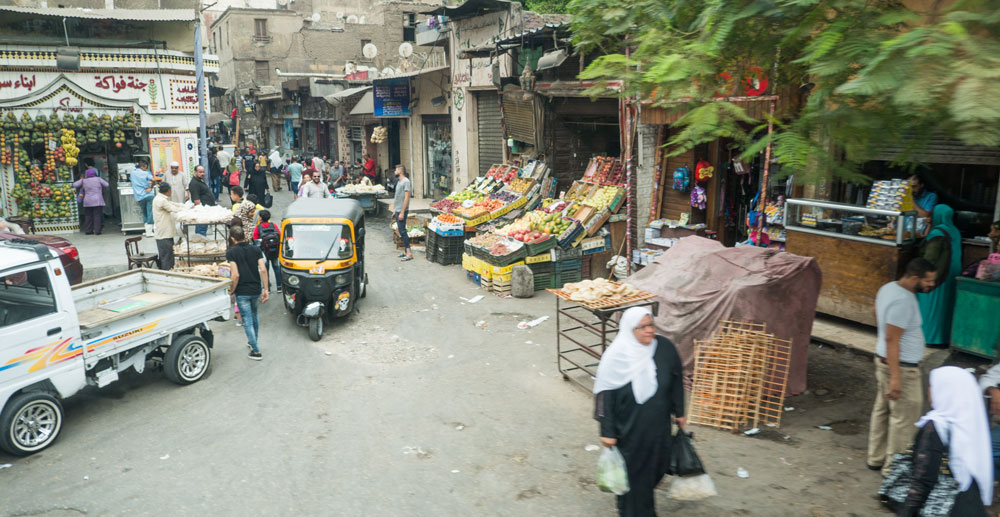
This place was selling all kinds of fruit.
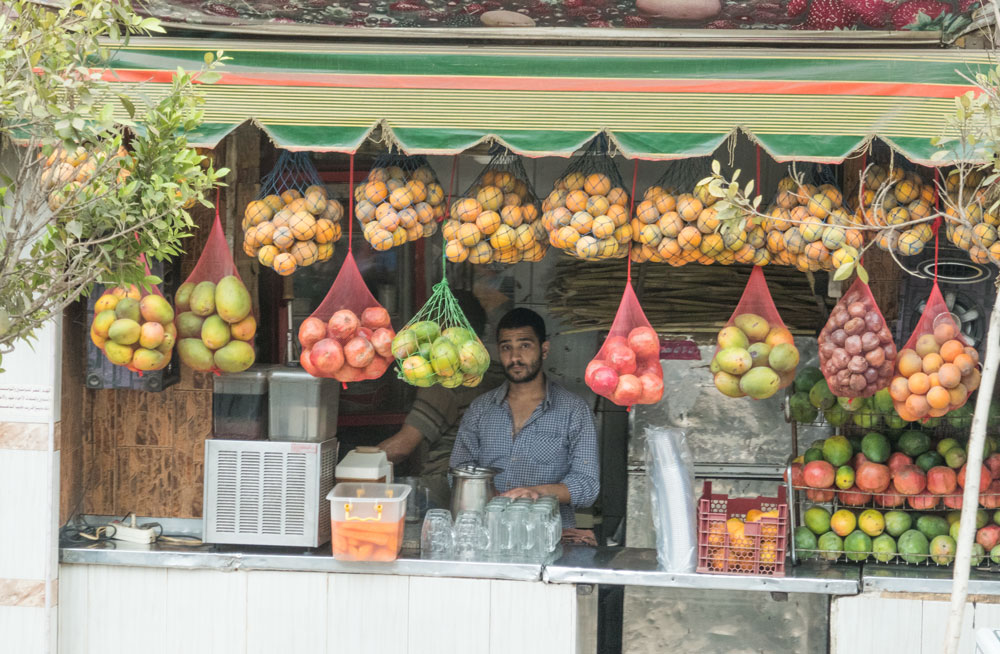
And a group of men smoking the hookah.
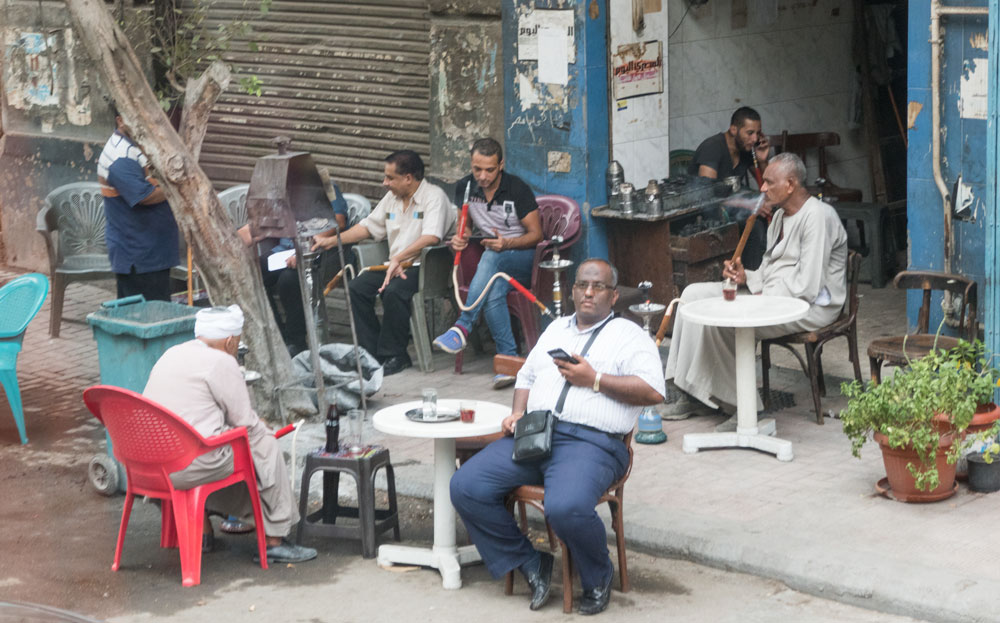
When we got back to the hotel, they had a beautiful bouquet of flowers in the lobby.
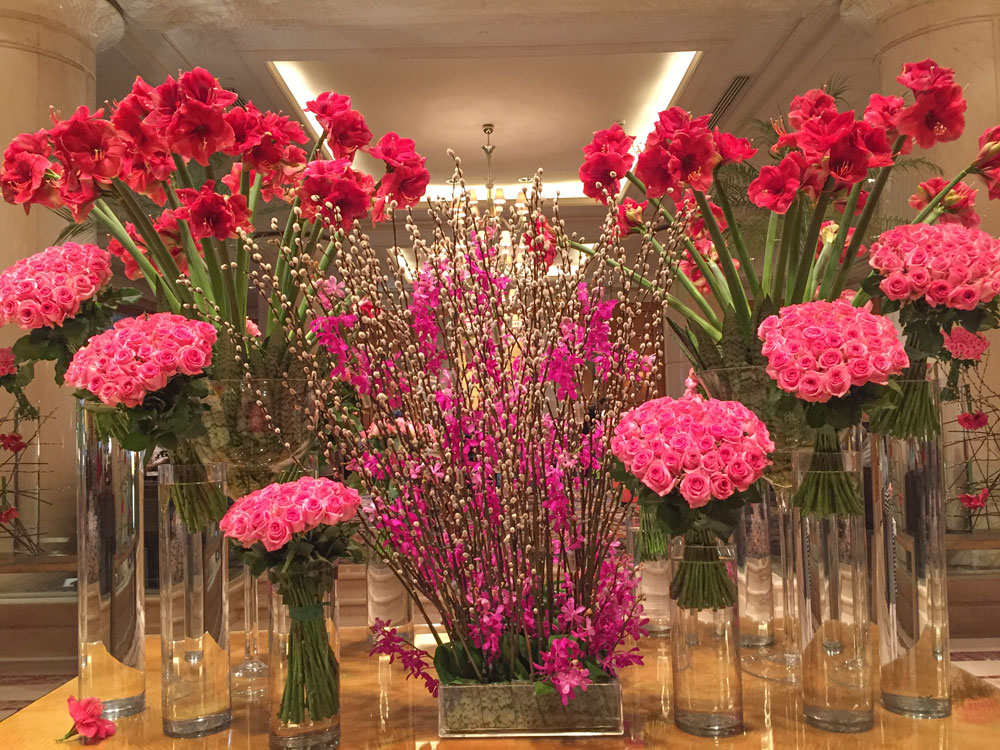
++++++++++++++++++++++++++++++++++++++++++++++++++++++++++++++++++++++++++++
10/1/2018 (Monday) We were up at 3:45am so that we could leave the hotel at 5am. We're going to the airport to get a plane to Luxor.
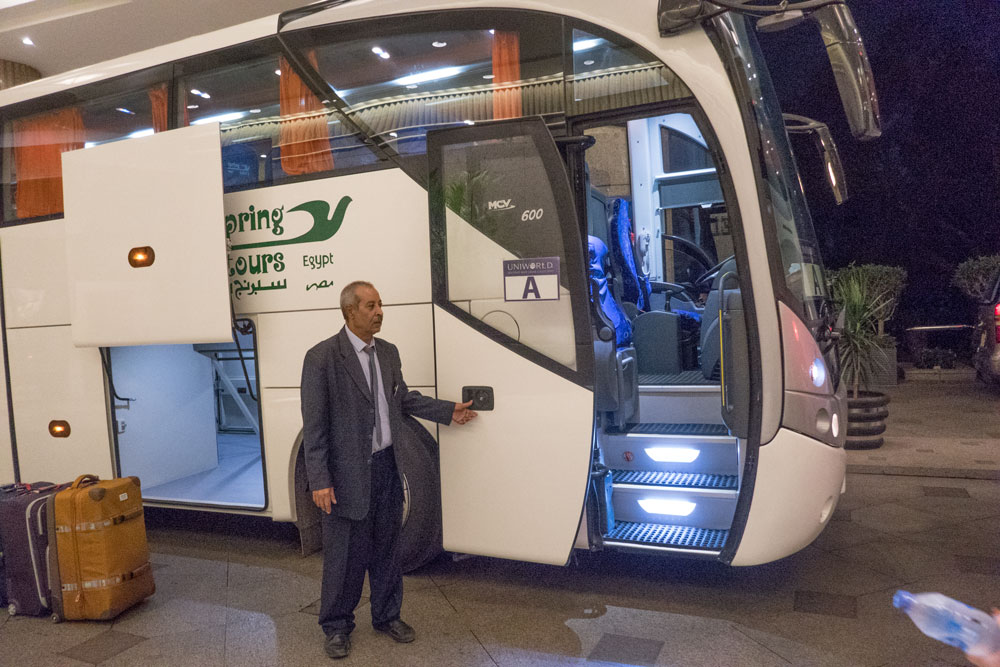
The airport was a madhouse. There was very little organization - people just pushed and shoved to get to the security clearance.
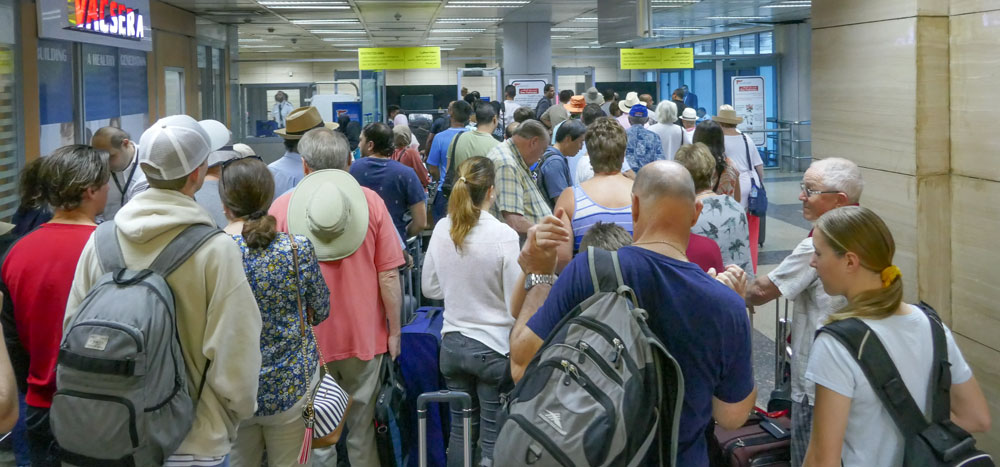
And the security was a joke. Everyone was pushing so hard to get through that the security people could not adequately check people. But perhaps because we were an American tour group they weren't very worried about us.
We had a bag scan to enter the airport, and the security check pictured above was the second security check. Our bags were scanned again and we went through the metal detectors. Just about everyone set off the metal detector because there wasn't a way to empty your pockets. They frisked each person but it was extremely perfunctory.
After we got through this second security check, we had to go get our tickets. Egyptians do not respect lines - they push and shove and try to cut into line, or if they're in line, they try to push ahead of you. And Judy reported that they are especially rude and pushy to women. She was nearly knocked off her feet at one point. It would appear that women are not given much respect in Egypt.
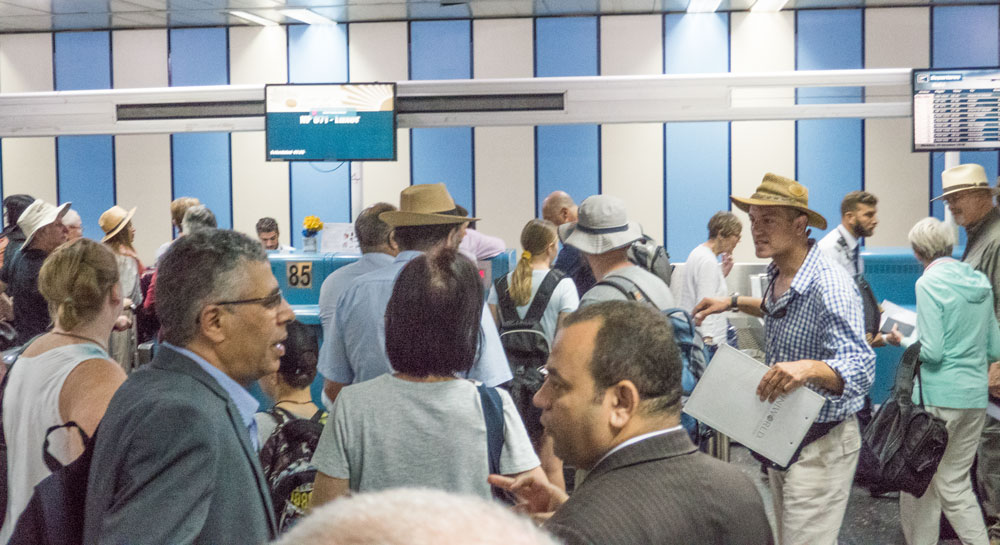
Then we went to the gate, where we had to go through another metal detector, but again, they didn't pay much attention to people who set off the detector. More pushing and shoving here,
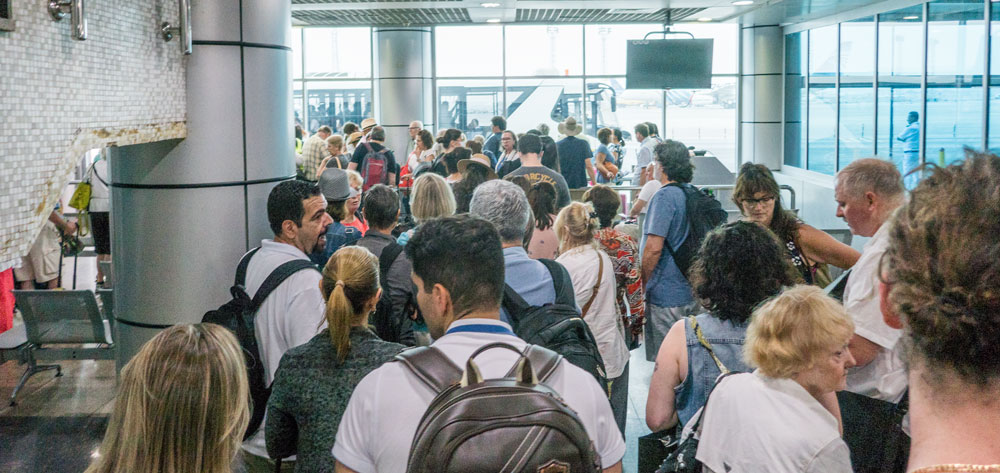
Eventually we were herded into a bus to take us to the aircraft.
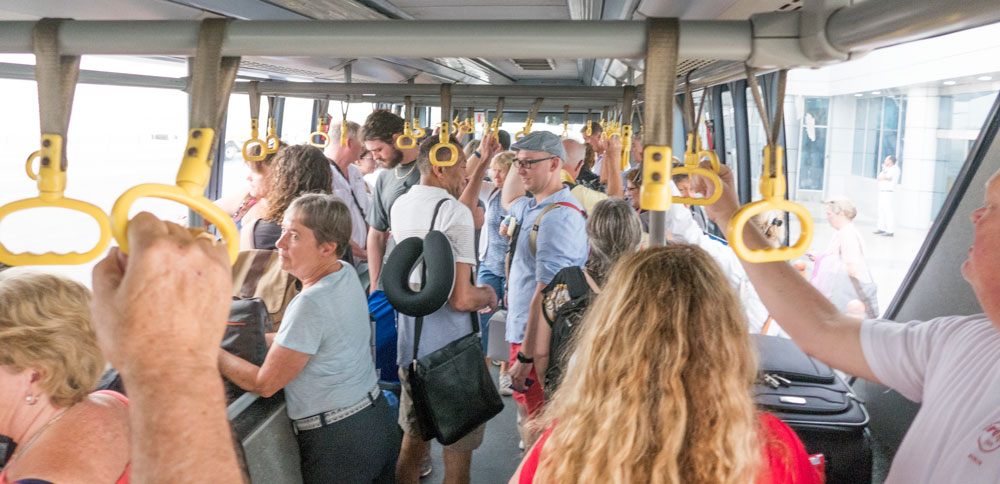
Here's the plane, an Airbus A321-200.
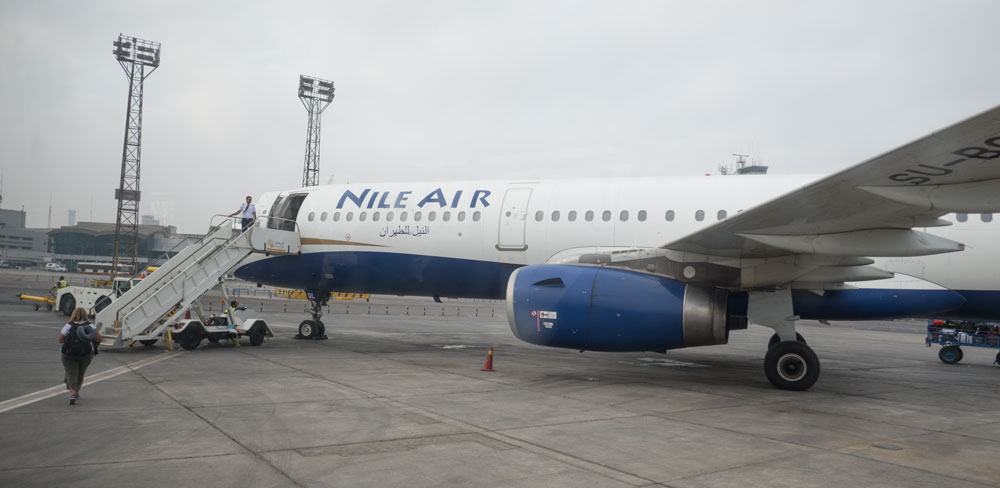
It's a typical cattle-car plane, but it got us to Luxor.
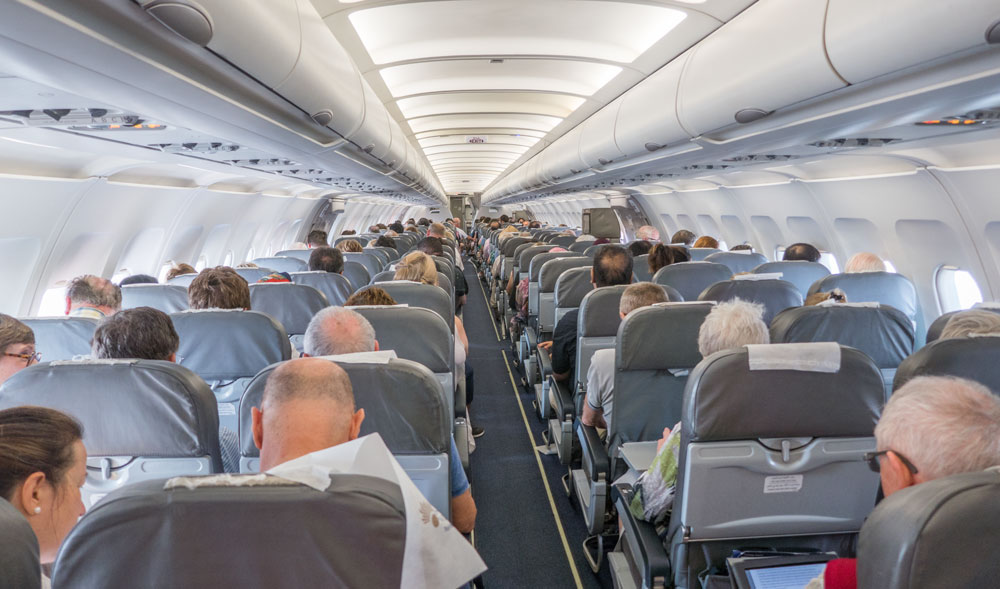
When we arrived, everyone's luggage showed up.
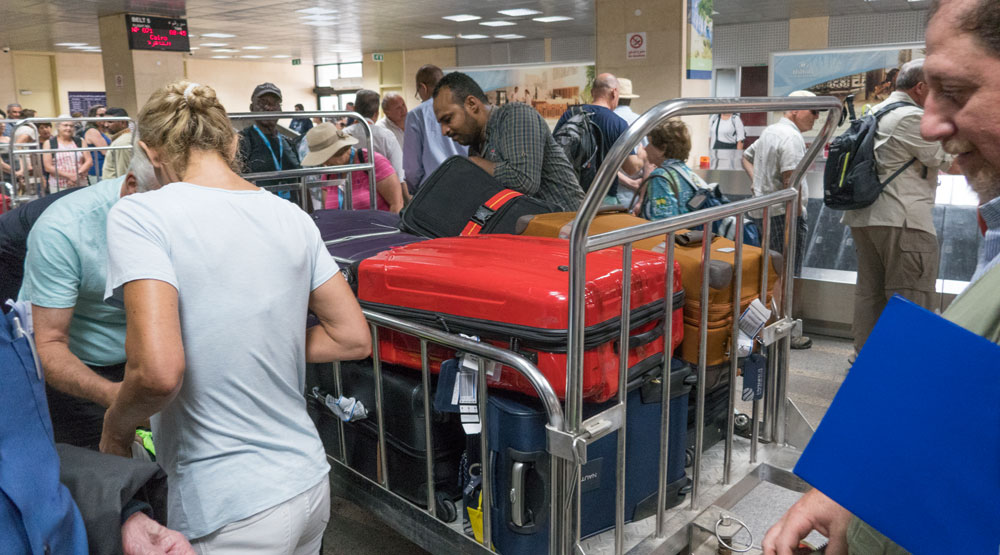
We boarded the bus and headed to the Temple of Karnak. I had been noticing that many Egyptian houses appear to be unfinished. That is, there were concrete support pillars and reinforcing rods sticking up from the top of the house. This was not just in Luxor - I saw the same thing in Cairo and on the drive to Alexandria.
The guide explained that people often do this so that they can add one or more floors to the house for their children, when the children marry. I then asked what happens when the parents die and the answer given was that the children inherit, but the male children get twice the share as the female children. So if there were two sons and one daughter, the daughter would get one-fifth of the value of the house, while the sons would each get two-fifths of the value of the house. Sexual inequality is pervasive in Egypt. It's a male-oriented society.
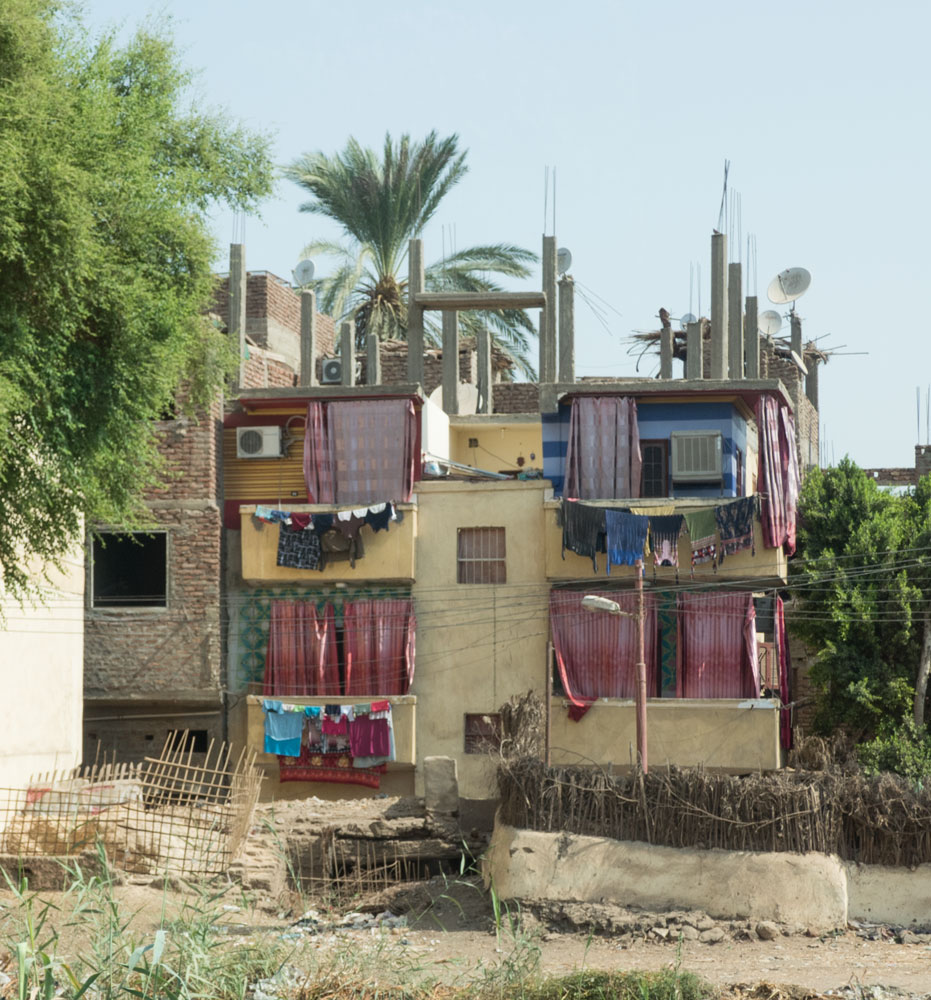
We arrived at the Temple of Karnak and entered the reception building. There was a scale model of the temple in the building, showing what the temple would have looked like in antiquity,
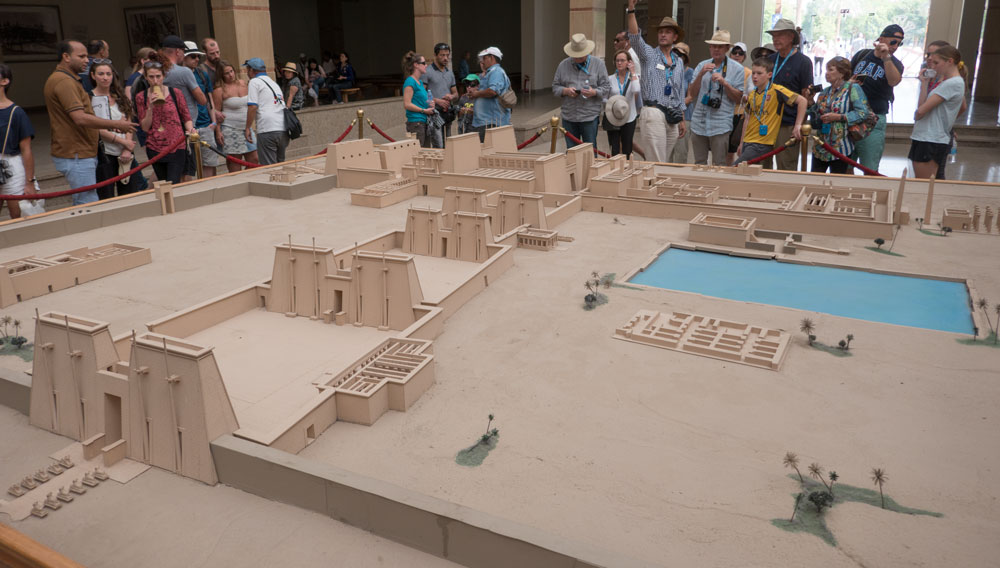
This is a modern aerial photograph of the Temple of Karnak and the Temple of the Precinct of Mut, with the causeway between the two temples showing. The Temple of Karnak is in the middle of the picture and the Precinct of Mut is to the right.
There's a causeway between the Temple of Karnak and the Temple of Luxor but it doesn't seem to show in this photograph. I think the causeway would be at the bottom of this picture leaving the Temple of Karnak.
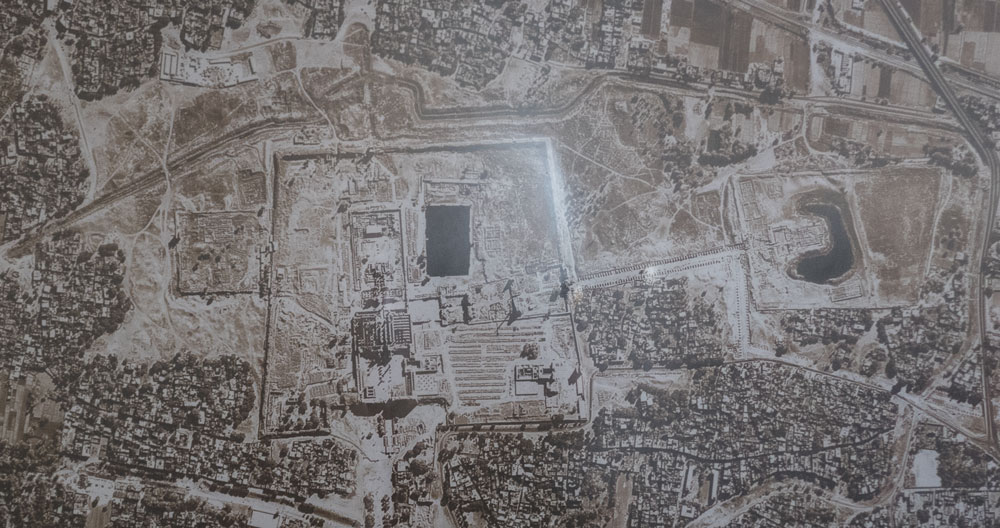
They are restoring the causeway between the Temple of Kranak and the Temple of Luxor Here's a picture of the causeway. It was lined with sphinxes.
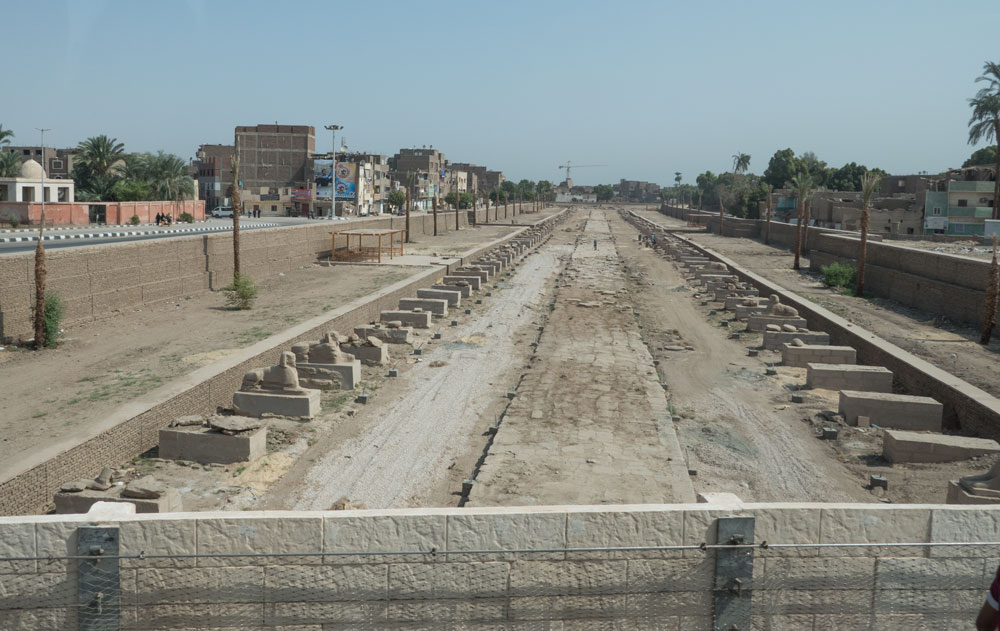
We walked from the reception building to the temple area. It was extremely hot, well over 100 F - hot enough to make you feel nauseous.
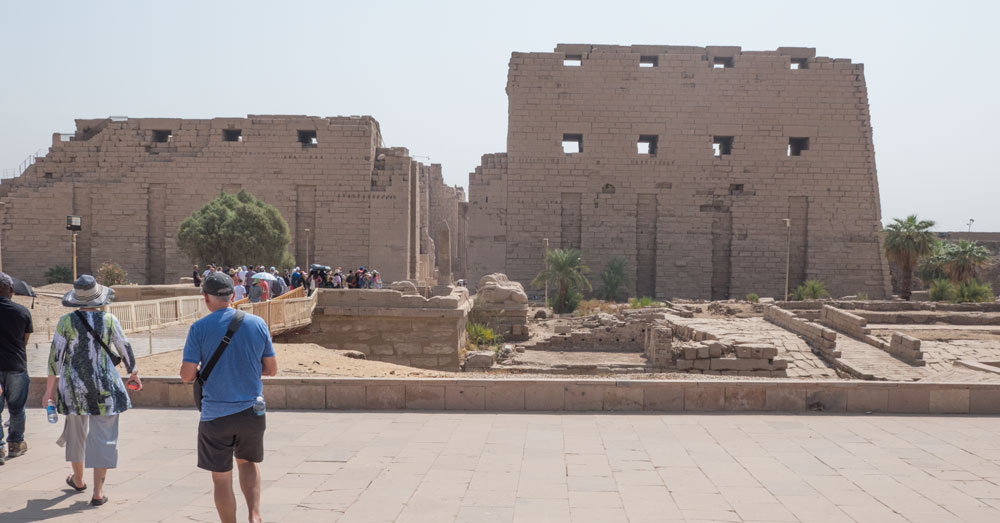
Here's the entry into the temple - it's lined with sphinxes.
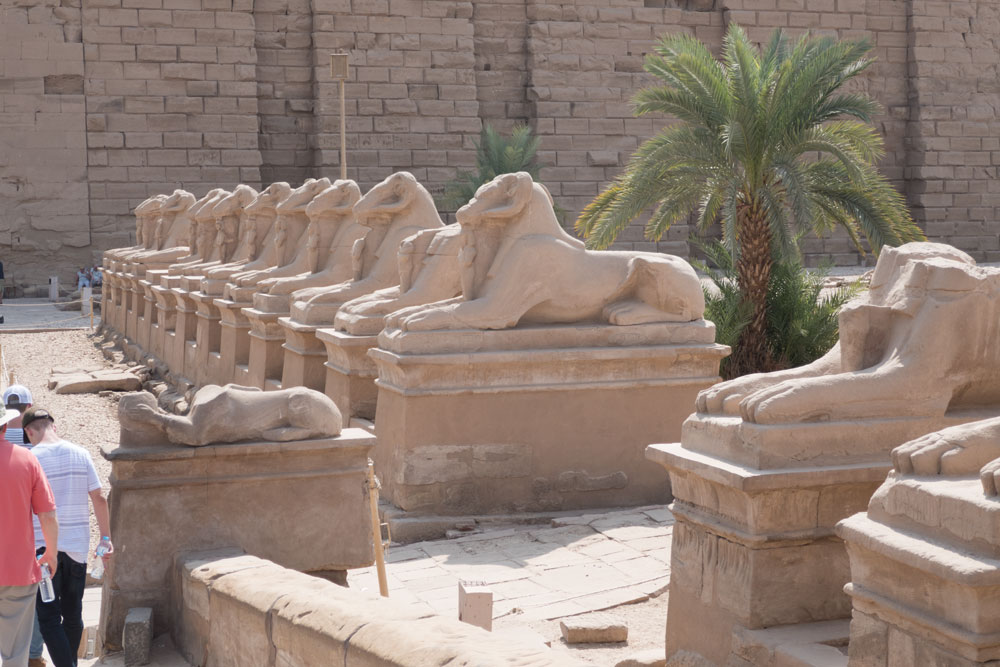
The entry into the temple.
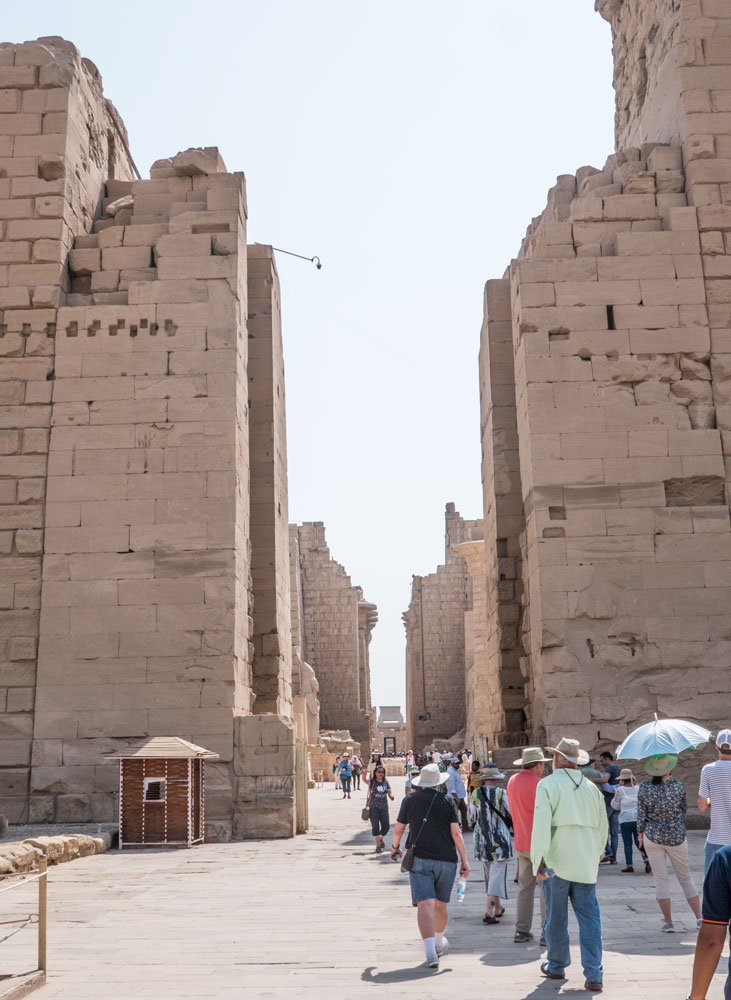
There's a courtyard just after you enter the temple area.
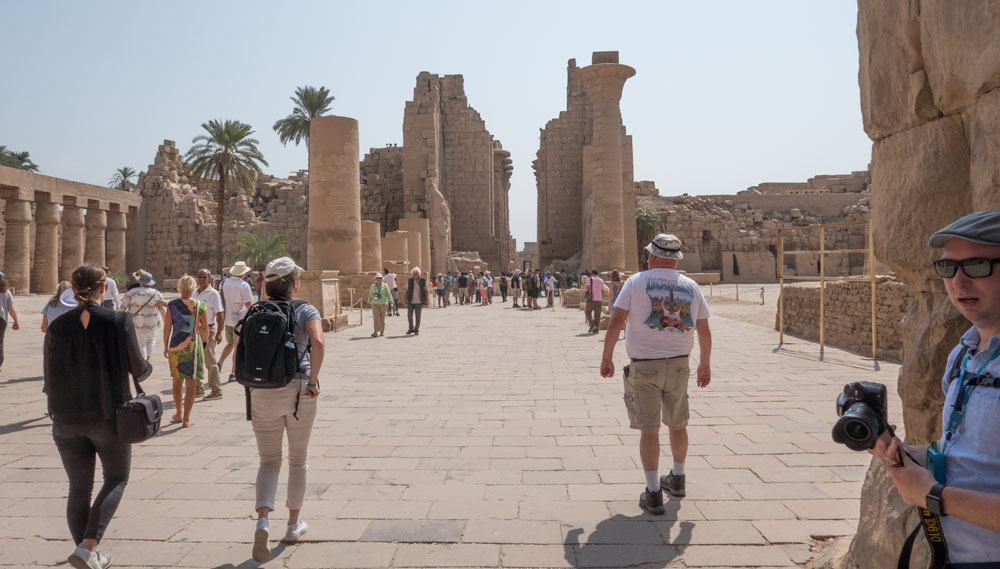
Lots of hieroglyphs. This is one I liked - with the head of a ram.
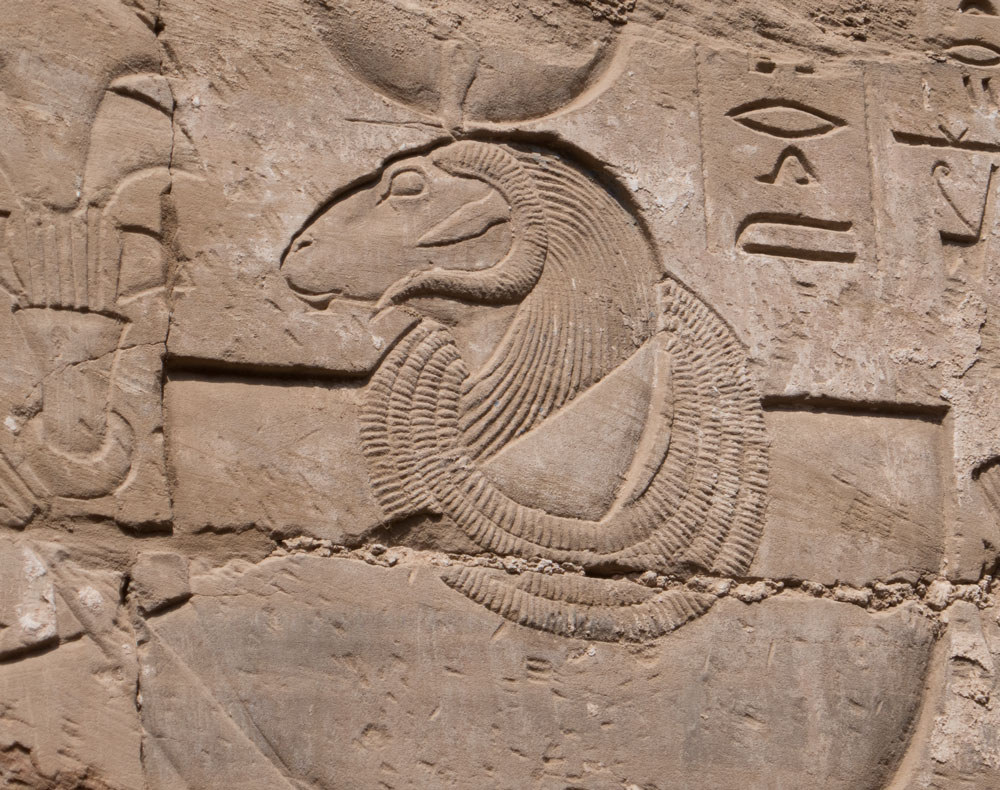
Looking down a column of pillars in the main temple area.
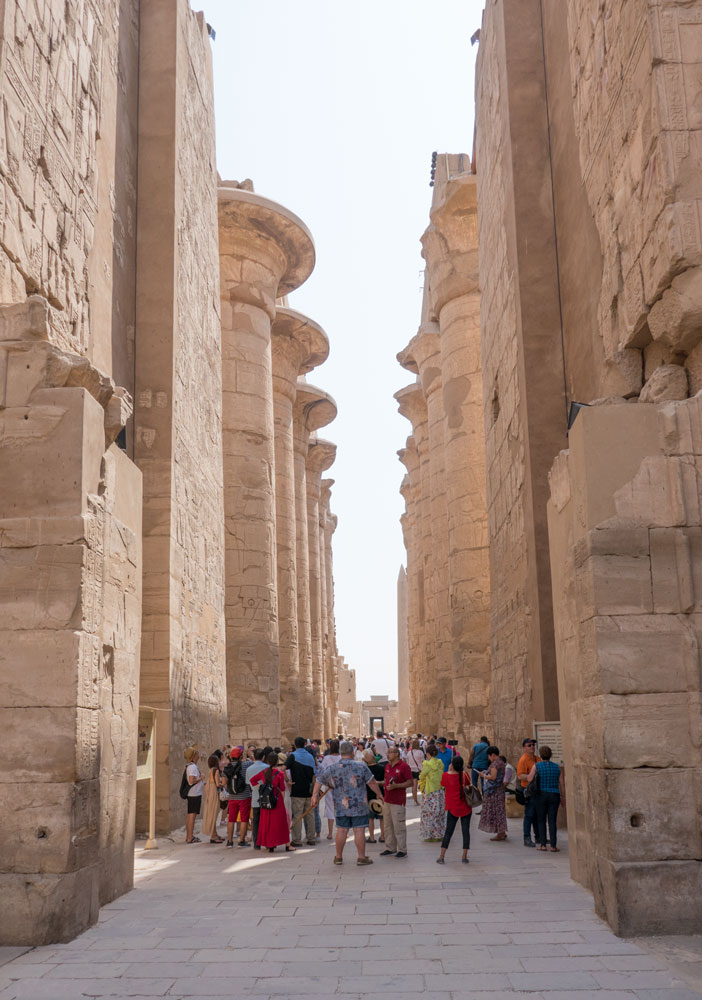
A closer view of the pillars. They're huge.
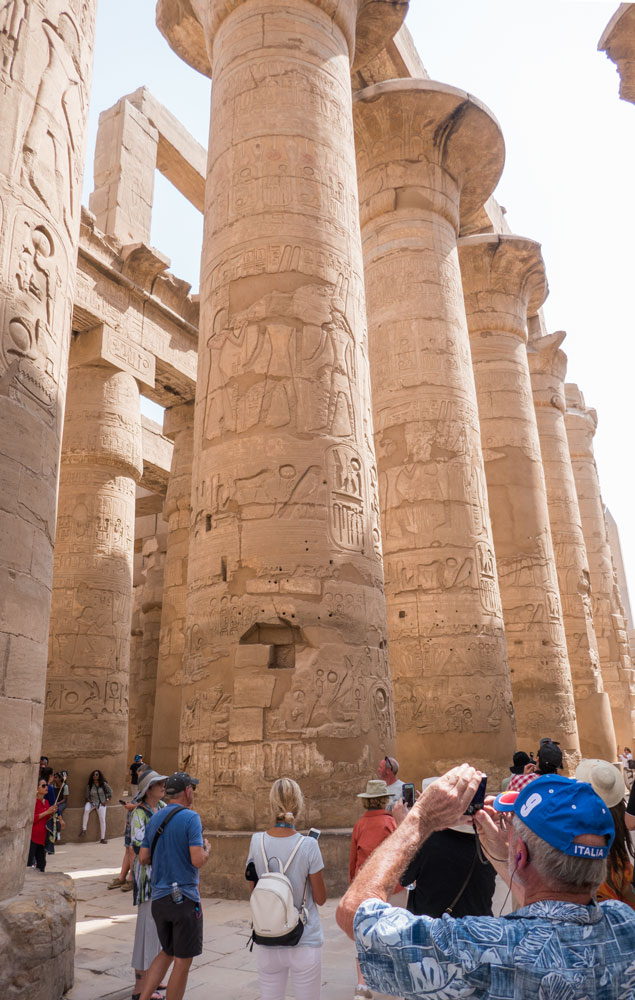
Judy took this picture of me at Karnak.
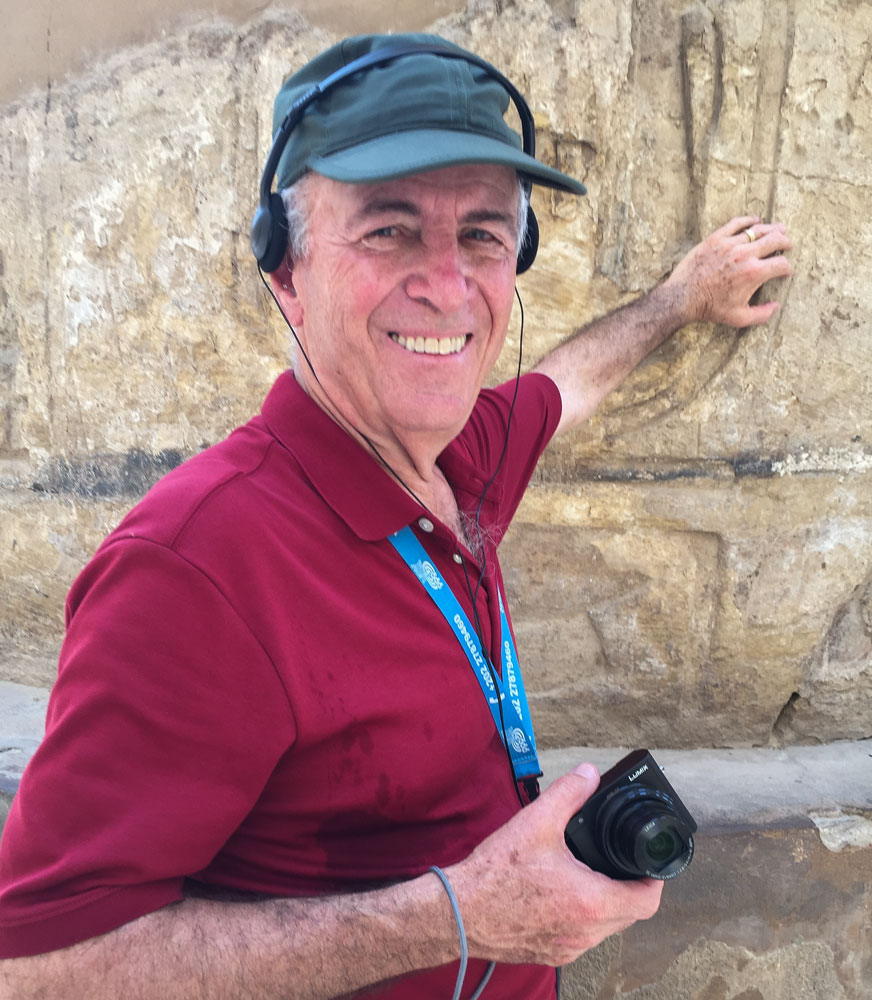
One of the obelisks in the temple area.
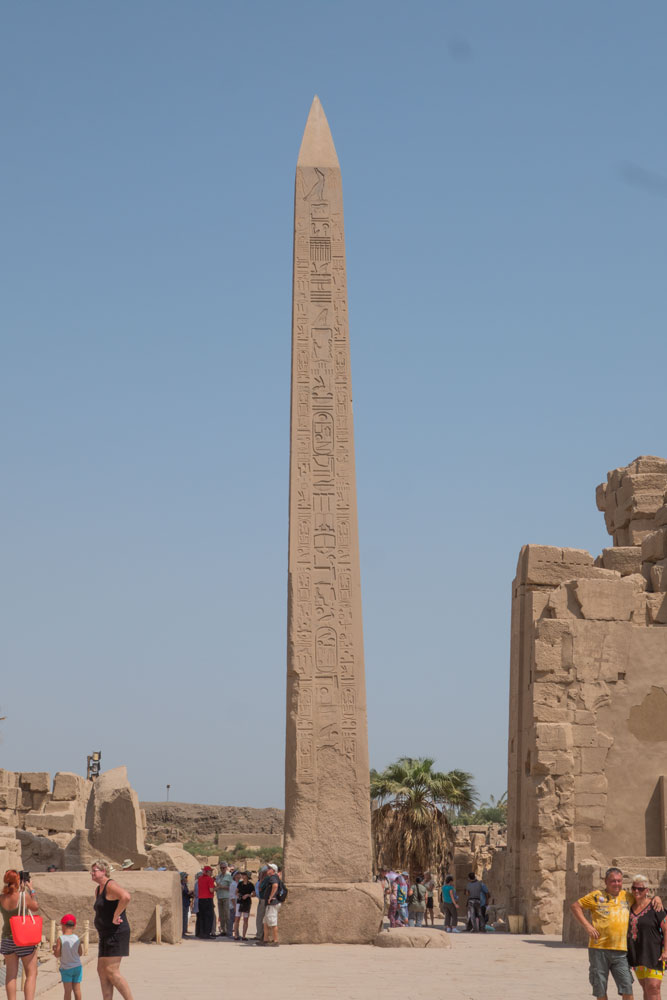
As I mentioned, it was beastly hot so as soon as the guide finished, Judy and I headed back to the bus and air- conditioning.
When we left the temple, we headed for the boat. Here's a picture of it, taken the next day.
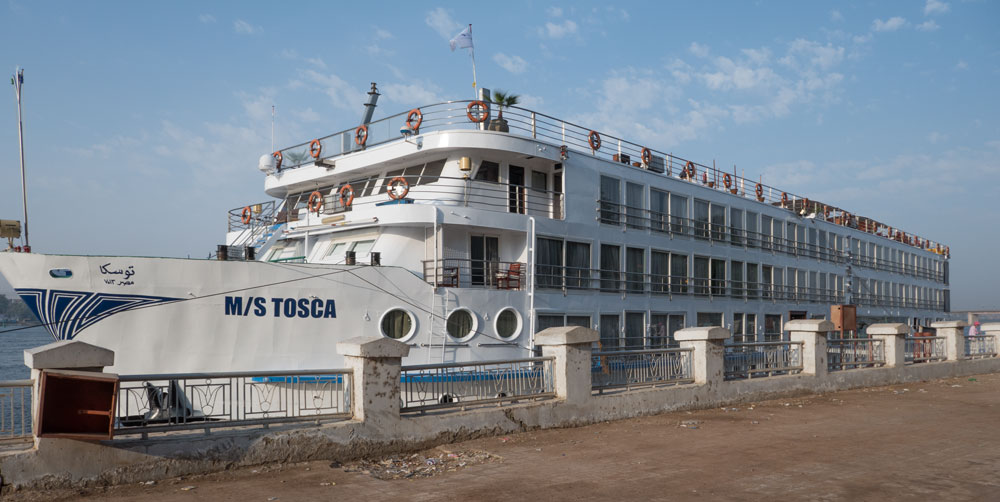
All our luggage made it to the boat.
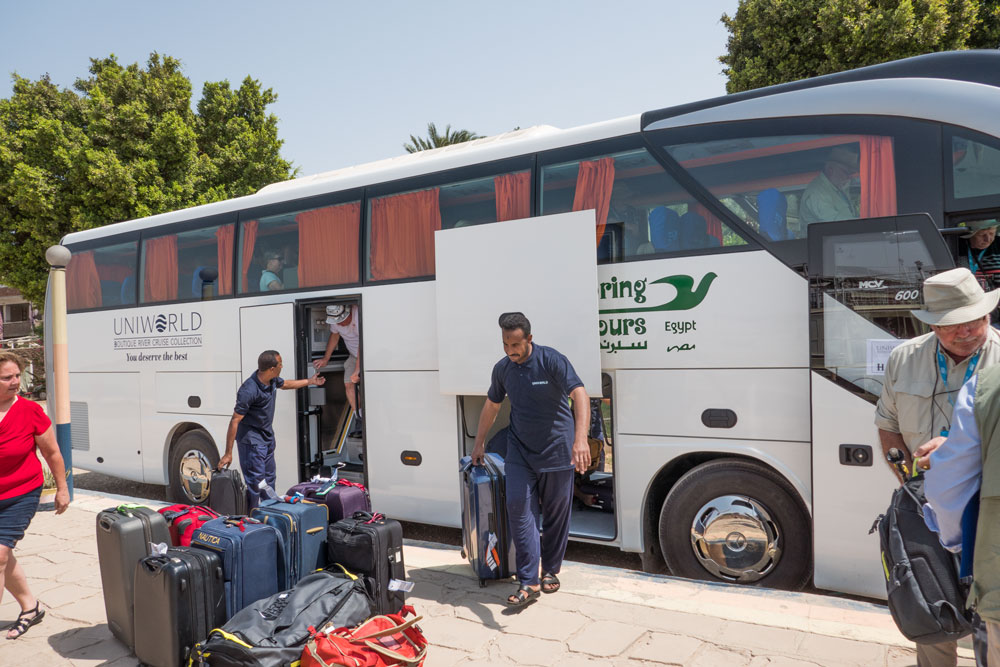
We gathered in the lounge waiting to get the keys to our staterooms.
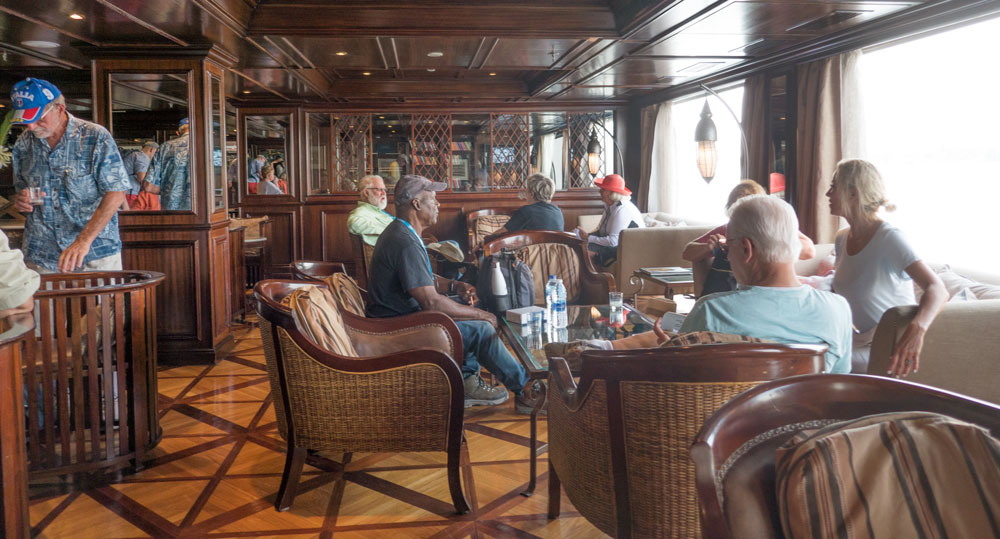
Then it was lunch in the restaurant.
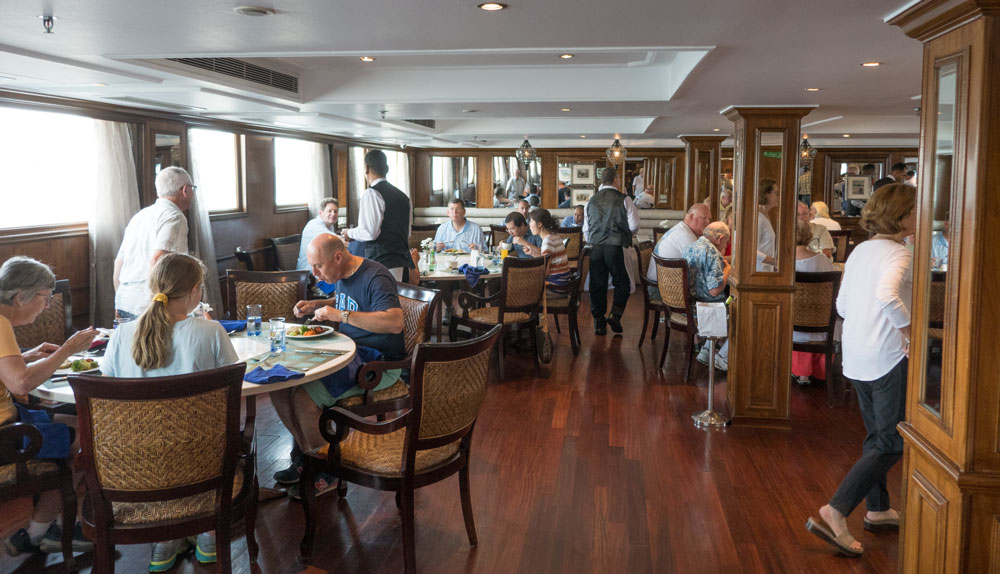
The ship cast off headed to Dandara (spelled Dendera in English) for our excursion tomorrow.
That evening we had the "get acquainted" and safety meeting. The hotel manager introduced the members of the crew - but I'm only going to put up a picture of the captain. The hotel manager is on the right and the captain is on the left. He comes from a village near Cairo that has produced many generations of ship captains on the Nile.
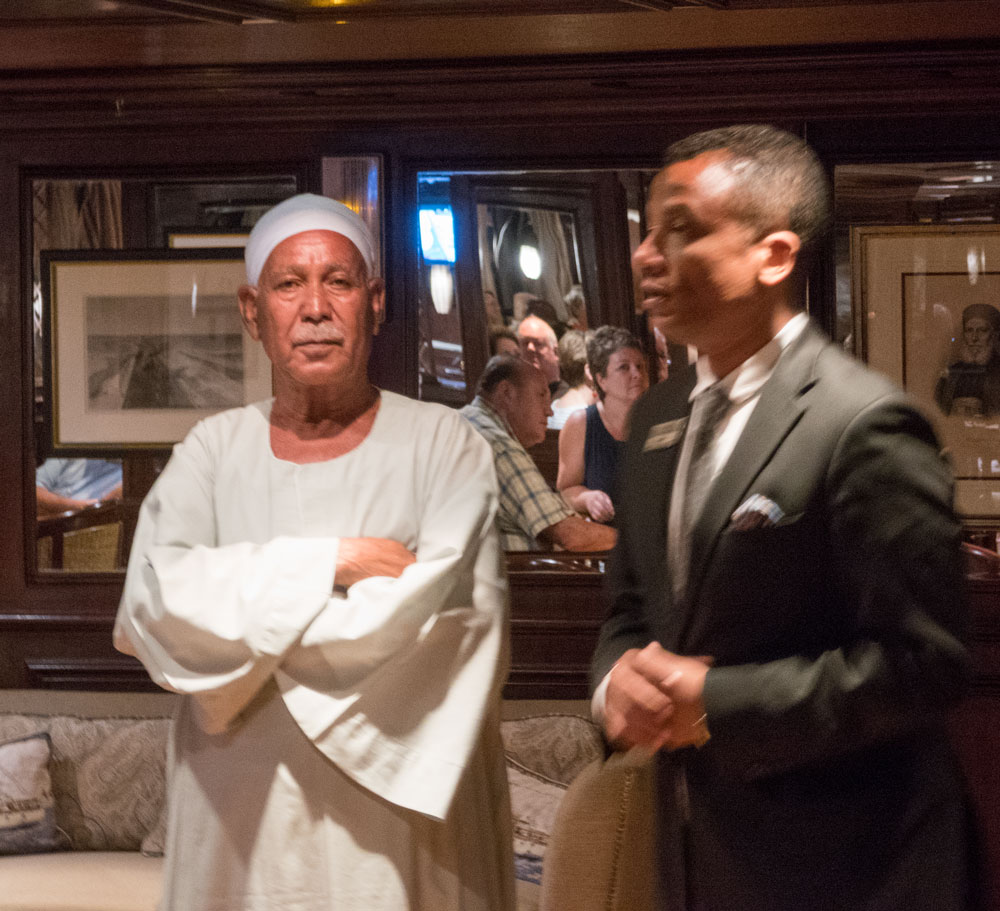
We had the usual instruction on how to put on a life vest and what signals were used for abandon ship. Then, a firefighter came out in a firefighting outfit.
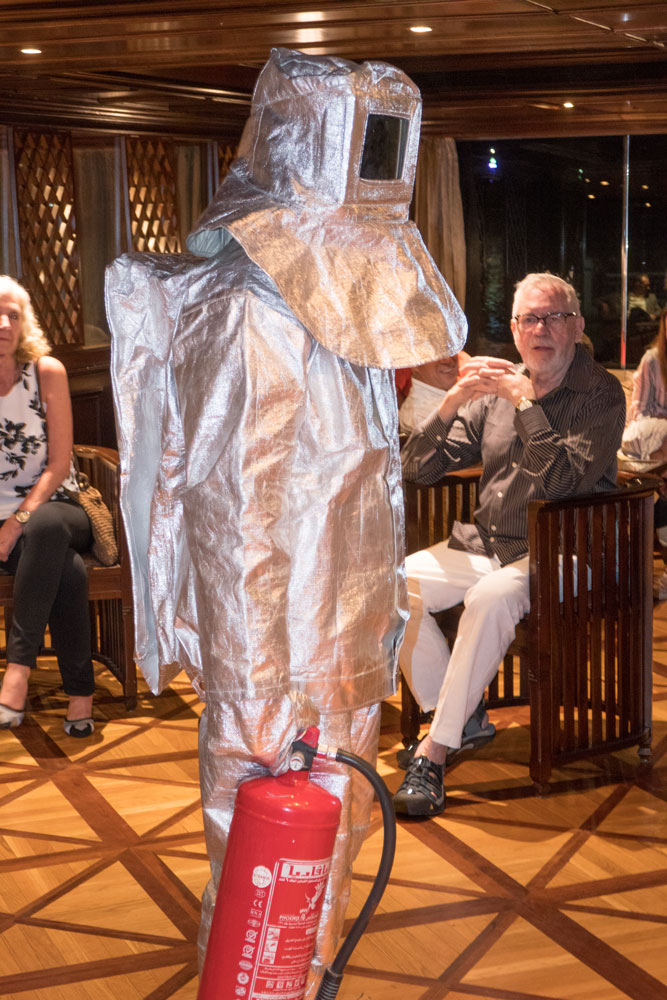
After that, it was off to bed. It had been a long day and tomorrow was an early departure for the Dandaera Temple.
The boat arrived in Dandara before dark and tied up for the night. [Note: The spelling of Dandara given here is the Arabic spelling. The English spelling is Dendera. You can also see it spelled Dandarah.]
Our adventure continues here